8 Fashions From the Past With No Future
Aviator glasses from the 1940s. Bell-bottom jeans from the ’60s. Scrunchies from the ’80s. They’ve all gone out of fashion and returned. Nothing, it seems, ever goes irreversibly out of style. But there have been fashion trends that are so dated, so uncomfortable, or so dangerous that they have little chance of being revived. Here are eight that we hope never make a comeback.
1. The Crinoline
Even though the hoop skirt was extraordinarily impractical, it didn’t make it any less popular. In the 1850s, almost all women wore some version of this style. The trend began with stiff crinoline petticoats made of horsehair, which flared out the skirt. This was followed by the “cage crinoline,” a contraption that wasn’t as heavy or as hot as horse hair and supported an even wider skirt. Women had to learn how to sit, enter a carriage, bend over, or even walk in a stiff wind without revealing more of themselves than any Victorian would want. Thankfully, as women in the 1900s demanded more freedom of movement and realized that this style was not only impractical but also uncomfortable, they abandoned this monstrosity.
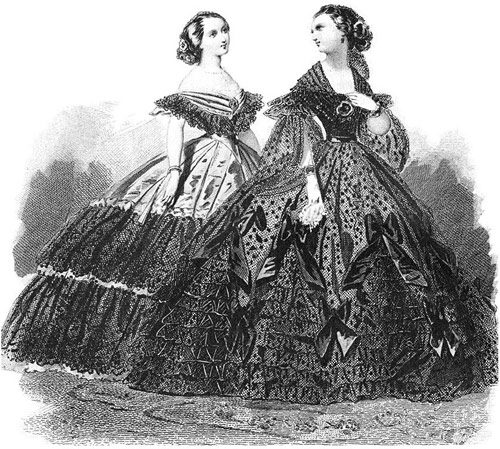
2. The Bustle
The second gone-forever fashion is the bustle, a device worn at a woman’s waist to extend her figure posteriorly, achieving a profile that anticipated Kim Kardashian. The bustle came into being when designers started reducing the wide circumference of the hoop skirt. This new style flattened the front of these very full, highly decorated skirts. The extra material was pushed to the rear. The bustle propped up this material, enabling a woman to wear more skirt than a normal figure would allow. When skirts became less extravagant, the bustle was no longer needed. It faded away and hasn’t reappeared since.
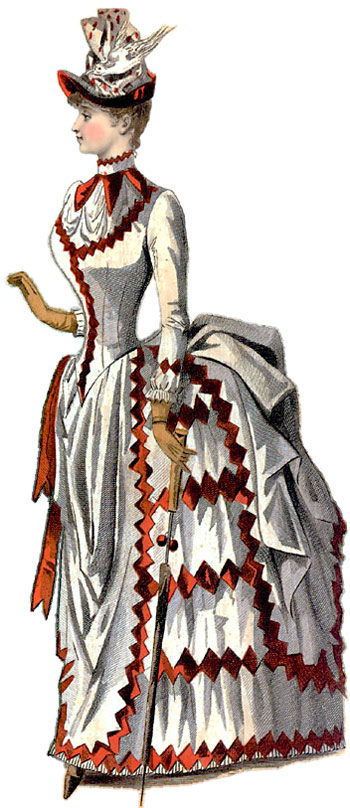
3. Knee Breeches
They were all the rage in the 18th century. Paintings of the founding father show all the men wearing those curious half pants. They evolved from the short pants of Roman men, which became long enough to reach the knee. In time, wealthier men added the hose that covered the lower part of the leg. Knee breeches seem to have fallen out of fashion in the early 19th century, a victim of the romantic style of the Regency period. Men now wear shorts or full length pants; there has been no serious effort to revive the awkward breech-length for men.
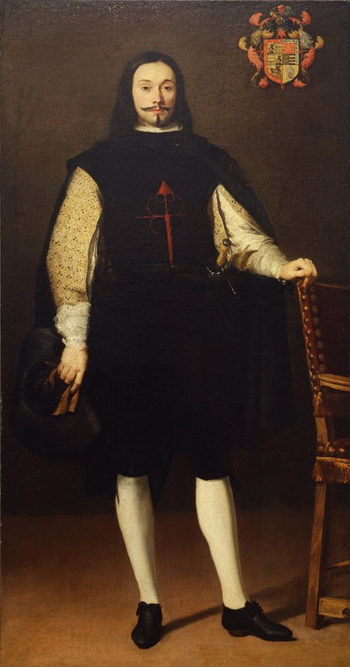
4. Powdered Wigs
A fashion trend for both men and women throughout the 18th century was the powdered wig. In addition to being extremely expensive and fragile, these wigs were not cleaned and would become homes to lice, insects, and even rodents. To make matters worse, these towering headpieces were tall enough to brush against low chandeliers, whose candles could easily set one of these wigs alight. The wigs fell out of favor when the British government started taxing wig powder in 1795. In France, elaborate wigs, along with French royalty who wore them, met their end during the French Revolution. Fortunately, we haven’t yet seen a return of these unsanitary and dangerous hair pieces.
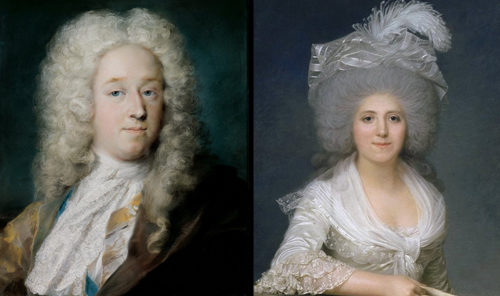
5. Mourning Wear
Mourning wear was extremely popular in the Victorian Era. Following a family member’s death, women would only wear somber, black outfits, often with dark veils, after the death of a husband or child. Several “household manual” publications would advise them what styles were appropriate and how long they should wear black. For a first cousin, mourning wear could be worn for as little as four weeks. If your husband died, you were expected to be in black for two years. In time, the tradition gave way to a preference for more personal, private expressions of grief.
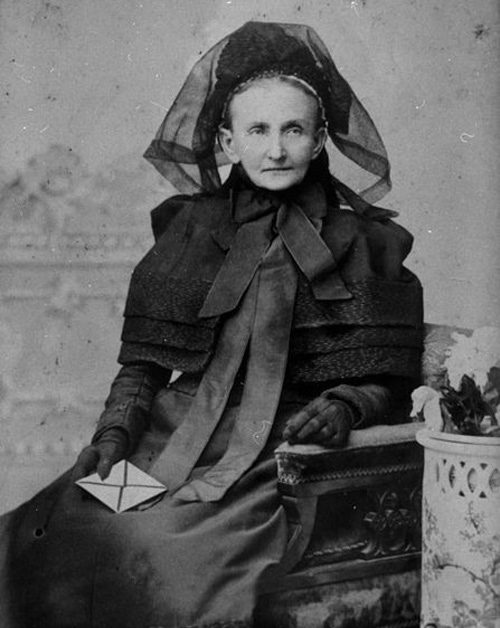
6. Hobble Skirt
The “hobble skirt” was a short-lived fashion trend of the early 19th century. The slim-fitting skirt was not only extremely uncomfortable, but also made it nearly impossible for women to walk, which is how it earned its nick name “hobble skirt” and “the speed limit skirt”. Women wearing these skirts had trouble climbing onto street cars or darting out of the way of traffic. In one extreme incident, a woman at a horse race ended up getting trampled because her skirt didn’t allow her to flee from a runaway horse. Thankfully, as women became more active in play and in work, there was a corresponding upsurge of common sense that booted the hobble skirt into permanent absence.
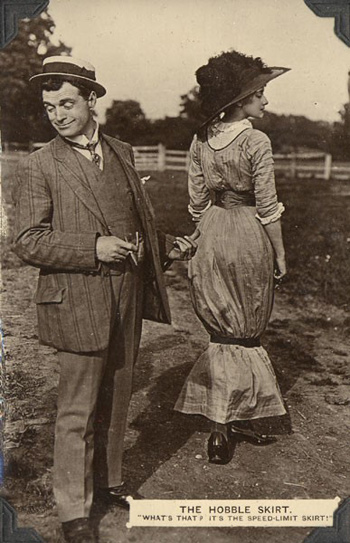
7. Celluloid Collars
While women were binding their feet together with tightly hemmed skirts, men were squeezing their necks cruelly with celluloid collars. These tall, rigid collars, which could be washed separately from the shirt, were made of an early form of plastic. Men wore them so tightly that multiple cases of choking were reported. Moreover, celluloid is extremely flammable, and more than once proved dangerous to a wearer who got too near an open flame. Men’s collars have become more and more open since those turn-of-the-century times. Nowadays it’s nearly impossible to get men to wear a tie, let alone a tight, uncomfortable collar.
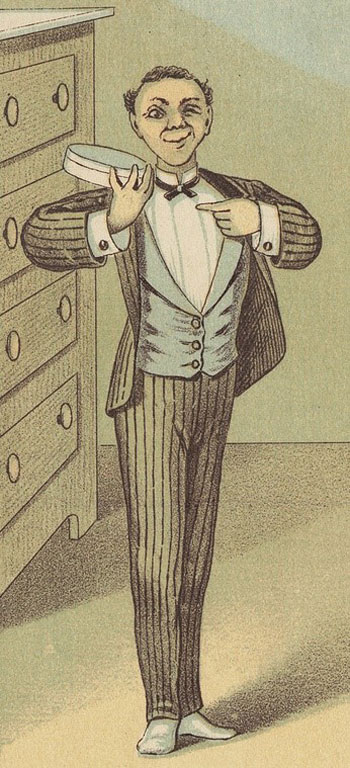
8. The Mullet
And could we forget the mullet? The old description of this unfortunate mutant of a short/long haircut was described as “business in the front, party in the back.” They could have added “awful on both sides.” But it was surprisingly popular in its heyday of the 1980s. Stars like Paul McCartney, Mel Gibson, and George Clooney fell victim to the treacherous charms of the mullet. Thankfully, we have been “mullet-free” since about the ’90s. Billy Ray Cyrus, father of Miley Cyrus, recorded a song called “I want my mullet back,” but we hope that the mullet — or any of the styles above — is gone for good.

8 of History’s Most Destructive Lies
These days lying is in the news — practically every day.
Lie was a word that, not so long ago, politicians and the media rarely spoke outright. But under the current administration, the president and the press have repeatedly accused each other of dishonesty. Many of these fabrications are ignored or quickly forgotten by a public that is no longer surprised by mendacity.
But all lies are not equal. And in the media’s frenzy of fact-checking, that’s one fact that’s too often overlooked. Some memorable lies have been spectacularly false but wrought relatively little harm. For example, think of President Nixon’s assertion that “no one in the White House staff … was involved” in the Watergate break-in (August 29, 1972), or President Clinton’s “I did not have sexual relations with that woman” (Jan 26, 1998). They probably changed no one’s mind, and did little to delay the ultimate consequences for those presidents.
But other lies in history not only were whoppers, but also caused untold damage. It’s important that we do not forget these terrible deliberate deceits — lies that were responsible for unspeakable suffering and, in some cases, millions of deaths.
Here are eight lies that had serious, large-scale, long-term consequences. No doubt there are very many more evil fabrications we have overlooked. We welcome your input. It’s important that we never forget how easily and how often mankind has been played for suckers, with disastrous results.
1. “In today’s regulatory environment, it’s virtually impossible to violate rules.”
That’s what Bernie Madoff said in 2007, addressing a conference on illegal practices in Wall Street. Even as he spoke, he was operating the largest Ponzi scheme in history. When it came crashing down the following year, the investment advisor had bilked 4,800 clients of $18 billion.
Result: After confessing that his firm’s asset management was “one big lie,” he was arrested, tried, and sentenced to 150 years in prison. (To date, $11 billion of the lost $18 billion have been recovered and restored to Madoff’s victims.)
2. “There is no doubt that Saddam Hussein now has weapons of mass destruction.”
In the aftermath of 9/11, the United States immediately struck back at the terrorist masterminds in Afghanistan. But many people in the Bush administration were convinced that the dictatorship of Saddam Hussein in Iraq was not only conspiring with Al Qaeda but was stockpiling weapons of mass destruction to use against the United States (illustrated in the above quote from Dick Cheney).
Despite there being no credible evidence that this was true — most intelligence and on-the-ground inspections revealed no WMDs — the Bush administration chose to pin its reasons for going to war on information from an Iraqi informant nicknamed “Curveball,” as well as on documents that showed Iraq had obtained a large quantity of uranium for the purpose of making a nuclear bomb. The informant was soon discredited, and the uranium documents were discovered to be obvious fakes, but the wheels were already in motion. In 2002, President Bush told the country that Saddam not only had stockpiled deadly chemical and biological agents, but that he had also been building nuclear bombs. In 2003 the United States launched war against Iraq. It’s not clear who knew the evidence for WMDs was false, or when they knew it. Regardless, the financial and human cost was devastating.
Result: Thousands of Americans and hundreds of thousands, if not more, of Iraqis have died in a war that lasted eight years and cost $2.4 trillion. General Colin Powell, who led the U.S. defeat of Iraq in the 1991 Gulf War, would later bitterly denounce his own speech in 2003 as U.N. Ambassador defending the Bush invasion. America and the world are still living with the war’s consequences.
3. “Cigarette smoking is no more ‘addictive’ than coffee, tea, or Twinkies.”
For years, the tobacco industry assured customers that cigarettes were neither unhealthy nor addictive. The makers of Old Gold cigarettes claimed “Not a cough in a carload.” And in 1994, James W. Johnston, CEO of R.J. Reynolds, told a congressional committee, “Cigarette smoking is no more ‘addictive’ than coffee, tea, or Twinkies.”
The reality, of course, is quite different. The Centers for Disease Control and Prevention estimates that 480,000 Americans die every year from cigarettes.
Result: In 1998, the four largest tobacco companies reached a settlement with 46 states to pay $206 billion over 25 years to help cover the medical costs of smoking-related illnesses.
4. “We are not about to send American boys nine or ten thousand miles away from home to do what Asian boys ought to be doing for themselves.”
In 1964, Americans were concerned about the country’s growing involvement in the Vietnam War. On October 21, 1964, President Johnson assured the country, as he was running for president, that they had nothing to worry about. Despite his words, the following March, he began shipping Americans by the tens of thousands to Vietnam.
Johnson’s statement began a long campaign by our government to lie to the American people about the fact that almost everyone who knew the facts — from the soldiers to the bureaucrats to the president himself — knew that the war was unwinnable. After Johnson left the White House, President Nixon continued the pretense, even secretly expanding the war into Cambodia.
Americans were furious when, in 1971, defense analyst Daniel Ellsberg released military intelligence — known as the Pentagon Papers — that showed the extent of the deception. They realized they’d been lied to about the conflict because neither Johnson nor Nixon wanted to take responsibility for losing an unwinnable war that we never should have undertaken in the first place.
Result: In addition to the 58,000 American lives it claimed, the war produced a chronic mistrust of the government that, for many, continues to this day.
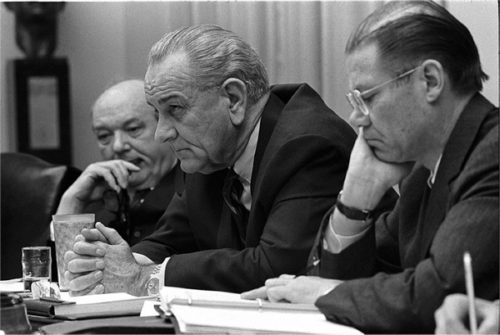
5. “There is no famine or actual starvation, nor is there likely to be.”
In the 1930s, Joseph Stalin was determined to wipe out private farms in Ukraine and put the population into Soviet controlled communes. He instituted a policy that began starving this region. Ultimately, between two and four million people starved to death. As could be expected, the Soviet government denied any problems. What is surprising is that many western reporters repeated Moscow’s interpretation of what was happening in the region.
Walter Duranty, a reporter for the New York Times, wrote repeatedly that was no famine (those are his words, above). He wasn’t the only reporter who parroted the Soviet’s line, but he was at a prestigious paper and had actually won a Pulitzer Prize for his coverage of Stalinist Russia. Duranty also justified the brutality of Stalin’s gulag system as a necessary measure that would ultimately benefit the Russian people.
Result: Duranty’s assertions that there was no actual starvation assured western leaders there was no reason to press for famine relief. His reporting helped the world turn away from the deaths and imprisonment of millions.
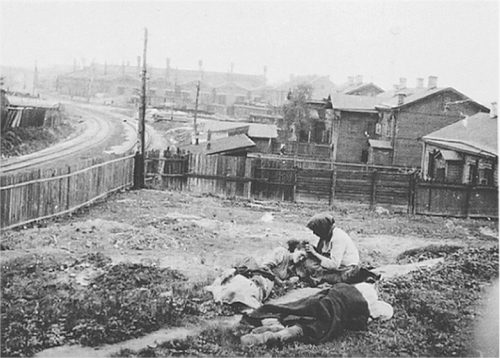
6. “The German Army was stabbed in the back.”
In 1919, General Paul von Hindenburg told the German people why they lost World War I. He said Germany hadn’t been beaten honorably on the battlefield by the enemy, but by radicals and other undesirables back home who’d overthrown the Kaiser’s monarchy and replaced it with a republic. The real reason for the defeat, Hindenburg said, was “The German army was stabbed in the back.”
In fact, the German army had thrown everything it had into one last, desperate chance for victory. By June, they had simply run out of steam. Moreover, the revolution had begun not by civilians but by members of the German military.
But the lie was swallowed by Germans who were convinced that if only the troublemakers could be silenced, Germany would regain its greatness.
Result: The lie fueled the rise of the Nazi party.
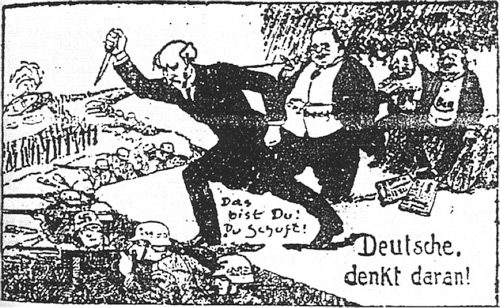
7. “The Jewish Peril: The Protocols of the Learned Elders of Zion”
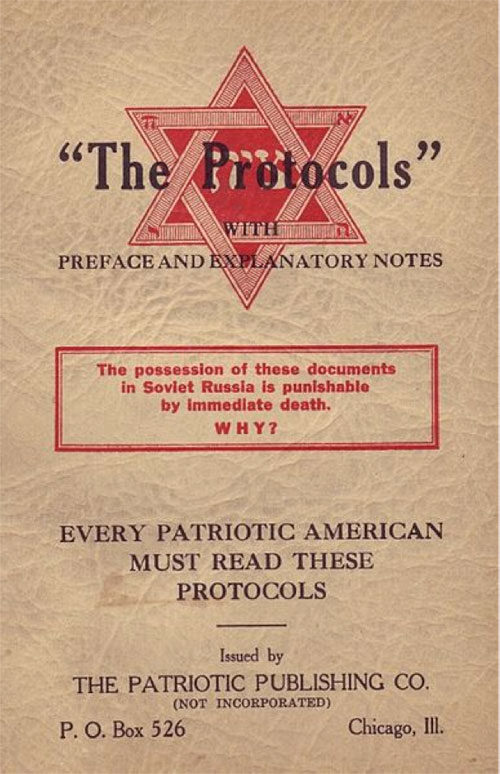
In 1905, Russian writer and mystic priest Sergei Nilus claimed that he had proof of a Jewish plan to achieve global domination by corrupting the morals of Gentiles and controlling the world’s media and money. The Jews were also plotting, he claimed, to slaughter Christian children, spread plague, and commit other atrocities.
Despite the fact that the Protocols were shown to be a malicious fabrication, many people stubbornly believed its vile slanders. Henry Ford thought it so important he paid to publish half a million copies. And the Nazis later cited it to justify their slaughter of eight million Jews.
Result: The Protocols continue to be used to fuel anti-Semitic hatred.
8. “We know Dreyfus is guilty of treason because he ‘made everything disappear.’”
In 1894, French military intelligence officers learned the Germans were receiving secret information about new French artillery. After reviewing possible suspects on the French General Staff, they accused Lt. Col. Alfred Dreyfus. His chief qualification for being suspect was his Jewish faith. He was tried by a military court, found guilty, stripped of his rank, and sent to permanent exile on Devil’s Island off the South American coast.
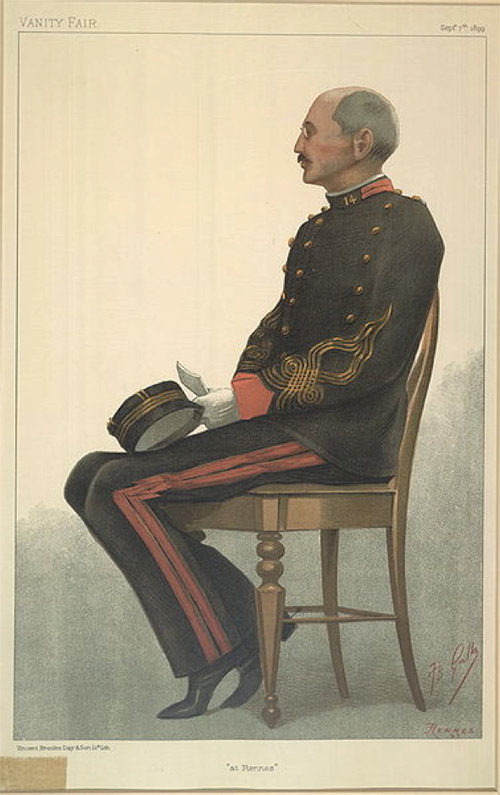
High-ranking military officials had been determined to pin the blame on Dreyfus. They had secretly supplied the judges with wholly invented evidence. And the fact that there was absolutely nothing that implicated him was actually used against him. The proof of guilt, an officer said, was that “Dreyfus made everything disappear.”
In 1896, new evidence indicated the traitor was actually another officer who was allowed to flee the country. For years, the military ignored the public outcry against Dreyfus’s conviction. Ultimately it yielded to pressure and tried Dreyfus again, and convicted him again.
Result: The lie did more than convict an innocent man. It split the country between social classes, age groups, and political parties. Even after Dreyfus accepted a pardon in 1906 rather than return to Devil’s Island, the case continued to divide the country, and this lack of unity seriously weakened its ability to defend itself in both world wars. (The French military finally proclaimed Dreyfus innocent in 1995.)
Featured image: Shutterstock
News of the Week: Saving Bookstores, Star Wars, and Some Guy Ate 30,000 Big Macs
Barnes & Noble
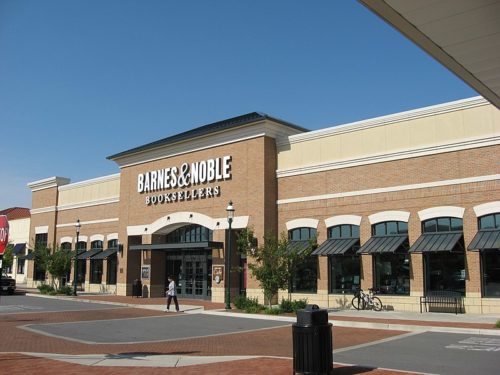
I’ve mentioned here before that if You’ve Got Mail were made today, The Shop Around the Corner would team up with the Fox Books superstore and go up against Amazon (I smell sequel!).
I thought of that after reading this New York Times op-ed by David Leonhardt on how we need to save Barnes & Noble. It seems like only yesterday when B&N (and other big chain bookstores) were seen as the bad guy. Now, with Amazon taking over everything, and the major chains going away, we’re getting nostalgic for the big chains. And well we should be. I want brick-and-mortar stores to survive, even if I love Amazon at the same time. (It’s interesting how the number of indie bookstores is increasing in this age of online book sales.)
The only problem I have with Leonhardt’s piece is a paragraph near the end, where he mentions that “publishers are focusing on big name writers” and “the number of professional authors has declined.” Publishers have always put their money and energies behind the bigger name authors, and I think there are probably more writers right now than ever; they’re just doing more on their own.
Now, a Story about a Family That Wants to Rule the Galaxy
Solo, the new Star Wars movie directed by Ron Howard, comes out on May 25. It was announced this week that the fifth season of Arrested Development launches on Netflix on May 29. Since Howard is the narrator of Arrested Development, it makes sense that there would be a way to combine the two. And here it is.
In other Star Wars news, a set of twins born on May 4 (aka “Star Wars Day”) was given the names of characters from the series to celebrate the day they were born. They were named Jabba the Hutt and Chewbacca (just kidding — they were given the middle names Luke and Leia).
Come, Let’s Mix Where Rockefellers Walk with Sticks
How much would you pay for an original Matisse? How about $80 million? That’s just one of the sales in this week’s auction of the David and Peggy Rockefeller art collection at Christie’s in New York City.
The three-day auction wasn’t even finished yet when they broke the record for the most money brought in from an art collection. On the first day, the total was at $650 million.
A lot of the winners were anonymous bidders. I can promise you I wasn’t one of them, though I did once own an album that had Edward Hopper’s Nighthawks on the cover.
And the No. 1 Rock Artist of All Time Is …
You wouldn’t think that someone would take the time to rank all 214 members of the Rock and Roll Hall of Fame from best to worst, but you’d be wrong. Bill Wyman did it for Vulture.
It’s a massive undertaking, so kudos to Wyman for even attempting it. He even gives his list of the artists that aren’t in the HoF but should be. Now, all lists are subjective, but this one is especially so, and I’m sure it will lead to a lot of arguments. Wyman says a lot of things about certain artists that fans of those artists are going to hate, and in some cases, his arguments are inconsistent. I mean, picking Chuck Berry over the Beatles? The Ramones over Buddy Holly? Jeff Beck and Hall & Oates should be higher on the list, and I know Bon Jovi fans aren’t going to be happy at all (though I think they should be number 215 in this list of 214). Let me know in the comments below what you think of the list.
You Want Fries with That?
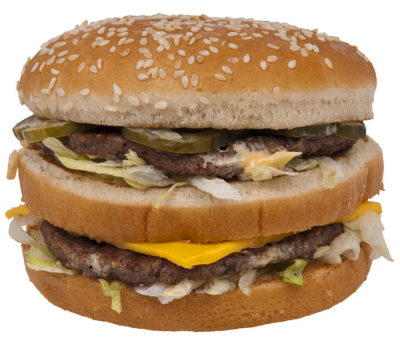
I once stopped at a Burger King and was informed that I couldn’t have a cheeseburger because they were all out of buns. I was rather stunned. A burger place that runs out of buns? That’s like Dunkin’ Donuts running out of coffee.
Don Gorske broke a record recently for eating burgers, not at Burger King, but at McDonald’s. He finished his 30,000th Big Mac last Friday at the same Fond du Lac, Wisconsin, location where he ate his first one in 1972. I guess this answers the eternal question, “How many years does it take to eat 30,000 Big Macs?”
With all of the publicity that Gorske’s eating has garnered, McDonald’s should give him free meals for life.
And if you’re wondering what it has done to him, note that Gorske has run marathons and probably has better cholesterol than you or I.
IMHO, This Controversy Is Ridiculous
I had no idea there was a debate going on about what that the abbreviation IMHO stands for. Many people think it stands for “In My Honest Opinion.” It actually stands for “In My Humble Opinion,” as this piece from The Atlantic explains.
BuzzFeed is conducting a poll to find out what readers think is right, and like most of the things that BuzzFeed does, the results are wrong. As I type these words, “In My Honest Opinion” has 57 percent of the vote, and “In My Humble Opinion” has 43 percent. Either BuzzFeed readers don’t know what they’re talking about, or they’re just clicking the wrong choice on purpose to mess with the results. The latter would be funny, but I sense it’s the former.
For the record, “LOL” stands for “laugh out loud,” “BRB” is “be right back,” and “tl;dr” stands for “this article is too long so I didn’t read it but I have an opinion on it anyway.”
RIP Art Paul, George Deukmejian, Anne V. Coates, Dick Williams, and Gayle Shepherd
Art Paul was the first art director for Playboy and created the famous bunny logo. He died last Saturday at the age of 93.
George Deukmejian was the governor of California for two terms, from 1983 to 1991. He died Tuesday at the age of 89.
Anne V. Coates edited many classic movies, including Lawrence of Arabia, The Elephant Man, Murder on the Orient Express, and Out of Sight. She received several Oscar nominations and was given an honorary award in 2016. She died Tuesday at the age of 92.
Dick Williams was a singer in the Williams Brothers singing quartet, which included his brothers Bob, Don, and Andy, who later went on to solo success. He died Saturday at the age of 91.
Gayle Shepherd was a member of another famous sibling group, the Shepherd Sisters, best known for their hit song “Alone (Why Must I Be Alone).” She died Monday at the age of 81.
Quote of the Week
“Movie reviews, they’re not even movie reviews anymore, they’re just ‘how come you made the movie you made and not the one I would have made?’”
—Bill Maher, ranting about how everyone seems to get so easily offended these days (warning, some salty language!)
This Week in History
Alan Shepard Becomes First American in Space (May 5, 1961)
Shepard went into space aboard the Mercury spacecraft Freedom. He made a second trip into space in 1971 as part of Apollo 14, along with astronauts Stuart Roosa and Edgar Mitchell.
Three Stooges Debut (May 5, 1934)
The very first Three Stooges short was titled Woman Haters, and the entire thing is done in rhyme and song. It’s one of the few Stooge shorts where they don’t use the names Moe, Larry, and Curly. Their names here are Tom, Jim, and Jackie.
Look for Walter Brennan as a train conductor. Co-star Marjorie White, who plays Larry’s bride, was killed in an auto accident just a year after Woman Haters was released.
This Week in Saturday Evening Post History: Father’s Homework (May 7, 1960)
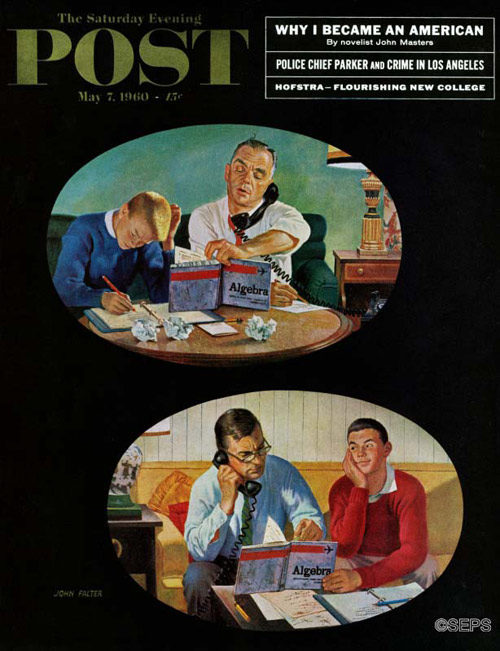
John Falter
May 7, 1960
Have you ever had that dream where you’re back in school and you have a big test, and if you don’t pass it you won’t graduate? I haven’t had a dream like that in many years, but I did have it throughout my 20s and 30s, and it disturbed me each time. During the dream, I could actually feel the dread of being stuck back in school. I’d wake up relieved that I wasn’t actually back in school but worried about going back to sleep, because I didn’t want the dream to continue. I guess I assumed my “waking up” was like a commercial break in the story.
Anyway, here’s a cover by John Falter depicting two dads trying to help their sons with algebra homework. I had to repeat algebra.
How to Make a Big Mac at Home
Did you know that there are several websites and books dedicated to the art of replicating restaurant food at home? One of the most famous is Top Secret Recipes. Here’s their attempt at copying the recipe for a McDonald’s Big Mac. Besides ground beef and a seeded bun, you’ll need dill pickles, iceberg lettuce, and their copycat recipe for the Big Mac special sauce.
And after you eat it, just think: only 29,999 more to go!
Next Week’s Holidays and Events
Mother’s Day (May 13)
Here’s a Post article on Anna Jarvis, known as “the woman behind Mother’s Day.” Make sure you get something nice for your mom this Sunday. And by “nice,” I don’t mean something you find at the last minute at the CVS checkout counter.
But when you do buy her something, remember: Mother’s no mechanic!
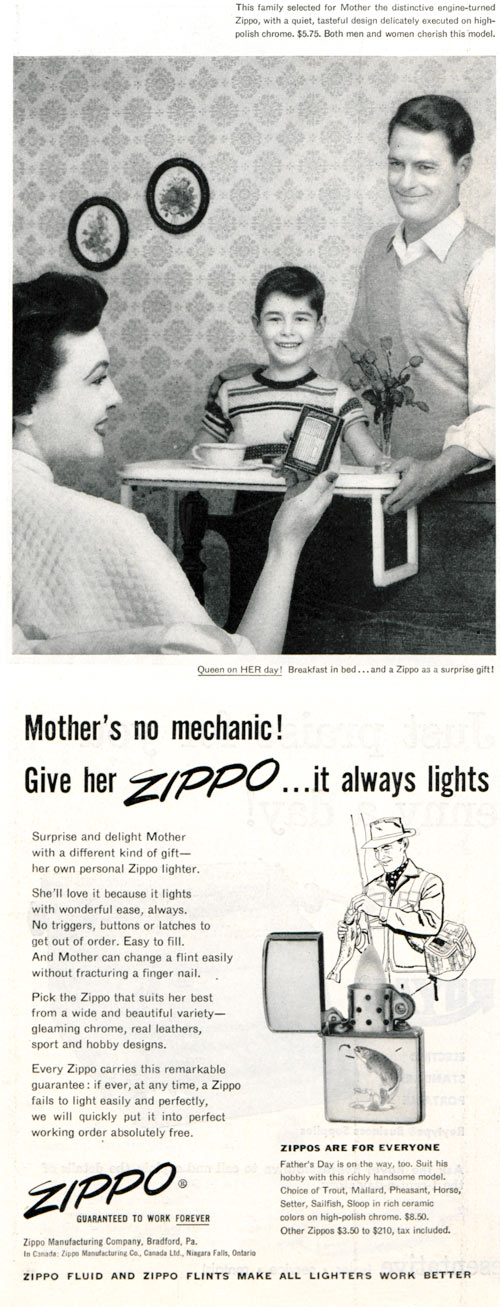
Considering History: The Great Gatsby, Multicultural New York, and America in 1925
This series by American studies professor Ben Railton explores the connections between America’s past and present.
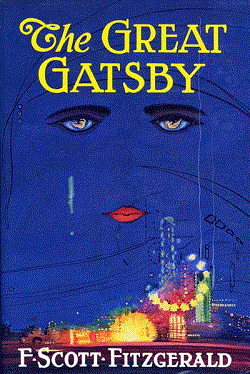
On April 10th, 1925, the first edition of F. Scott Fitzgerald’s novel The Great Gatsby was released in the United States. Originally published to mixed critical reviews and mid-level sales at best, over time Gatsby has become one of the most acclaimed and well-read American novels. It is often located close to the top of “Best of the 20th Century” lists, is a perennial contender for the elusive title of The Great American Novel, and is one of the most frequently taught texts in American classrooms. While Fitzgerald did not choose to go with the alternate title Under the Red, White, and Blue, there’s no question that his book has become closely linked to images of American identity and community—and to national narratives such as the American Dream.
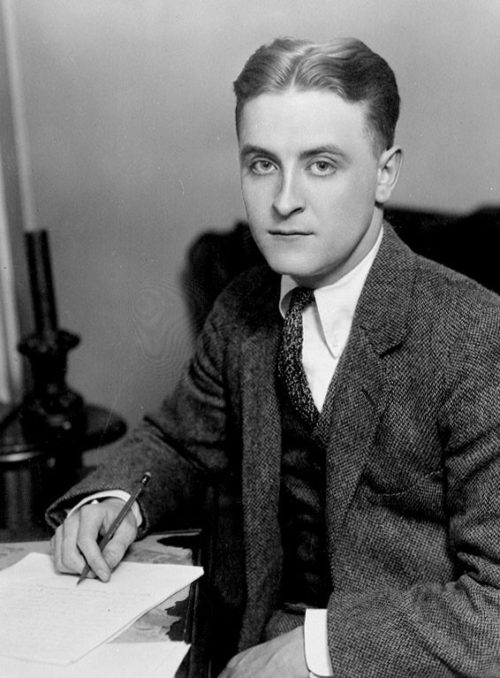
Fitzgerald’s novel is also closely connected with its time period and cultural moment, and specifically with images of the “Roaring Twenties.” The novel’s depictions of wealth, excess, recklessness, the interconnected cultures of alcohol and organized crime during Prohibition, and new technologies like automobiles and Hollywood silent films, have become synonymous with that era between World War I and the Great Depression. Yet while Gatsby certainly captures those historical and cultural contexts, there are many other sides to 1925 America that are much less central to its world. There are other books published in 1925 that can better connect us to those histories and add them into our collective memories of the era.
Perhaps the most striking historical absence from Fitzgerald’s novel is that of African Americans and the nascent Harlem Renaissance. As part of the first wave of what came to be known as the Great Migration, large numbers of African Americans had been migrating to New York City for more than a quarter-century, and the upper Manhattan neighborhood of Harlem was by 1925 one of the nation’s most vibrant African American communities. Many of New York’s white socialites were frequent visitors to and patrons of the jazz clubs, parties, and social events that came to embody the relationship between that Harlem world and the city around it. Yet despite its New York setting, Fitzgerald’s novel does not reference Harlem at all — indeed, the book’s only African American characters are a stereotypical trio of “three modish negroes, two bucks and a girl,” whom the narrator Nick Carraway observes in a passing car, “the yolks of their eyeballs roll[ing] toward us in haughty rivalry.”

Providing an important corrective to that absence is another ground-breaking 1925 book, The New Negro: Voices of the Harlem Renaissance. Assembled and edited by the philosopher, educator, and activist Alain Locke, The New Negro features a broad and varied collection of African American creative writers, scholars, historians, journalists, and visual artists, highlighting the wide range of forms, topics, and contexts to which this developing Harlem community had already connected. From the first published story by Zora Neale Hurston (who was about to enter Barnard College) to some of the earliest published poems by Langston Hughes, along with contributions from established authors and leaders such as James Weldon Johnson and W.E.B. Du Bois, The New Negro reflects a burgeoning African American, New York, and national community that existed alongside Gatsby’s world but offers a very different side to America in 1925.
In the political realm, many of the most prominent and divisive 1925 debates focused on the interconnected topics of immigration and national identity. Coming at the culmination of a four-decade period of particularly significant waves of immigration, the 1921 Emergency Quota Act and 1924 Quota Act had enshrined exclusionary, white supremacist attitudes in national immigration law. As South Carolina Senator Ellison DuRant Smith put it in a Senate speech in support of the 1924 law, “It seems to me the point as to this measure … is that the time has arrived when we should shut the door. … Thank God we have in America perhaps the largest percentage of any country in the world of the pure, unadulterated Anglo-Saxon stock … and it is for the preservation of that splendid stock that has characterized us that I would make this not an asylum for the oppressed of all countries.” Debates over these laws and policies, and whether for example to extend them to immigrants from Mexico and other Western Hemisphere nations (initially not included in the 1924 Act), continued throughout the remainder of the decade.
Fitzgerald’s novel does include such a white supremacist and xenophobic voice in the character of Tom Buchanan, and particularly his unhinged Chapter 1 rant about how “civilization’s going to pieces” and “if we don’t look out the white race will be—will be utterly submerged.” Tom is as close as the novel has to a villain, and by linking him to these bigoted views Fitzgerald certainly makes a clear point about those national debates. But although New York City was one of the most consistent destinations for the era’s immigrant arrivals (and had been since the late 19th century), Gatsby does not feature any overtly immigrant or even particularly ethnic American characters. Indeed, its only such minor character is Meyer Wolfsheim, the “small, flat-nosed Jew” to whose illicit and criminal activities Jay Gatsby is connected in unclear but unsavory ways and who is at best a stereotypical character of Jewish and Jewish American identity.
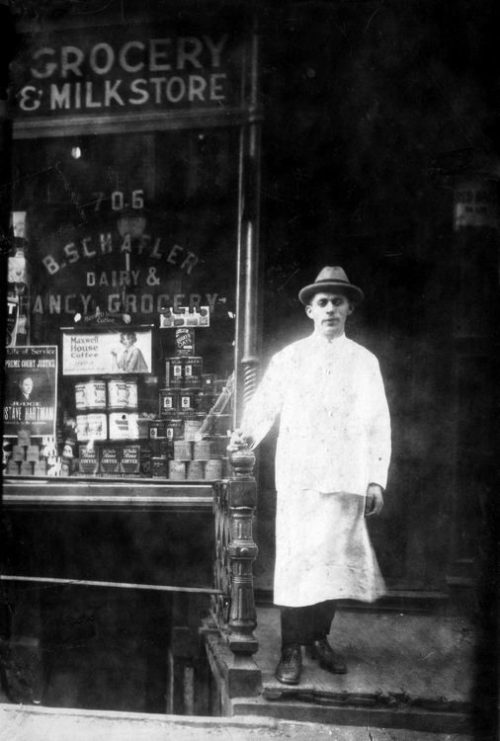
To read about the very distinct images of Jewish immigrants to New York City and Jewish American identities, read Anzia Yezierska’s Bread Givers. This compelling and ground-breaking 1925 novel offers is narrated by Sara Smolinksy, the daughter of Polish Jewish immigrants whose perspective and story we follow from age 10 through her graduation from college and subsequent professional and personal developments. Through Sara’s eyes we see the challenges facing a multi-generational Jewish American immigrant family (with a father determined to maintain his role and identity as an Orthodox Talmud scholar), the communal setting of the Lower East Side’s tenements, and the possibilities and limitations of assimilation into American society for a second-generation immigrant such as Sara.
On the anniversary of Gatsby’s publication, adding books like Bread Givers and The New Negro to our reading list can only help contextualize and expand the world and meanings of Fitzgerald’s classic novel.
North Country Girl: Chapter 44 — A Narrow, Naked Escape
For more about Gay Haubner’s life in the North Country, read the other chapters in her serialized memoir.
I was tucked up in my old boyfriend Steve’s apartment, drifting along in a haze of pot smoke as the summer slipped by. I roused myself to waitress a few shifts each week at Pracna while Steve’s drug business took off. My roll of ones in the shoebox under the bed grew modestly; when I peeked into Steve’s Folgers can resting on the TV, it was filled to the brim with his unlawful earnings. He had new customers arriving daily and became even more loathe to leave the apartment.
I was reduced to enjoying the great outdoors on Steve’s tiny balcony, no one around except the Land O’Lakes maiden on her billboard. I’d remember another patio, the one in Acapulco, with the blue Pacific to the horizon and the cloudless sky above, broken occasionally by a terrified parasailer. I wondered if I’d ever go back.
The robbers came during one of those twilight Minnesota evenings when the sky is streaks of pink and orange, and the sun hangs out on the horizon as if reluctant to leave the party.
Steve and I were in bed, stoned on very good Thai stick, trying to decide if we should get something to eat or just have another beer. There was a sharp rap at the living room door; the ground floor entrance to the duplex didn’t lock, but opened up to the downstairs neighbors and the stairs to our second floor apartment. Steve got up and pulled on his jeans; we both assumed it was a customer. “Coming?” Steve asked me and I shook my head no. I wrapped the sheet around myself and went to close the bedroom door behind him, when I saw the front door slam open, knocking Steve over as he undid the chain. Two men with guns pushed their way in and stood over Steve.
The guns were huge. As they swung around the living room, the gaping muzzles became the black holes I had learned about in astronomy, an emptiness that could make everything disappear. From the way the guns looked, I realized I was in a badly altered state: my pot buzz was shot through with a sickening bolt of adrenaline that left me rooted to the floor, one eye peering out of the half-inch of cracked door, all my senses reeling. The scene in the living room looked wavy and distorted, as if caught in the fun house mirror at Excelsior Amusement Park.
 I knew that behind the two cannon-sized guns were men, but they were indistinct, insignificant forms; the guns were in charge, dragging the men around the room. My stoned brain, weaned on Warner Bros., dredged up a cartoon memory of Yosemite Sam holding a big six-shooter that popped and unfurled a tiny flag with BANG! scrawled in comic sans. I mentally pushed that image aside, it was not helping. But there was nothing I could do to help Steve, who was cowering by the front door, skinny and shirtless and the color of cigarette ash.
I knew that behind the two cannon-sized guns were men, but they were indistinct, insignificant forms; the guns were in charge, dragging the men around the room. My stoned brain, weaned on Warner Bros., dredged up a cartoon memory of Yosemite Sam holding a big six-shooter that popped and unfurled a tiny flag with BANG! scrawled in comic sans. I mentally pushed that image aside, it was not helping. But there was nothing I could do to help Steve, who was cowering by the front door, skinny and shirtless and the color of cigarette ash.
There was yelling; I couldn’t make out what the men were saying. It was if their voices came from far away, like someone shouting down a well. Then I clearly heard “Your stash, asshole! Where’s your stash?”
Steve sat up and made a croaking sound and the guns swung towards him. He was pointing at the glass-top table in front of the couch, the table where Steve’s wares were always on display. “Bullshit!” yelled one of the guns, and swung upward to crack Steve’s forehead. Why wasn’t he bleeding? Steve slowly raised his hand to his head and not till then did red seep through his fingers. He crumpled to the floor while the other gun swept the table drugs into what looked like but surely could not be a Marimekko orange and yellow flowered pillowcase.
My mind finally snapped to attention and my thoughts raced forward. I closed the door softly, but I couldn’t shut out the voices of the men yelling at Steve for drugs and money. The drugs were in the freezer and the money was…in the bedroom with me, in the coffee can perched on top of the TV. The guns knew where there were drugs there was money, and Steve, for all his rugged outdoorsman skills and feigned urban swagger, was about to send them into his bedroom, where I crouched naked behind the door.
I dropped the sheet and dashed out to the patio, which was littered with beer bottles and cigarette butts. I threw one leg and then the other over the balcony rail and dangled over the side, the metal edge cutting into my fingers, my feet scrabbling in the air. It was a pretty big drop from the second floor and I was nude, but the surface twelve feet below me was grass, the scraggly untended lawn that surrounded the duplex. I looked over my right shoulder at the Land o’ Lakes Indian maid, who looked back, as inscrutable as the Mona Lisa, and I let myself drop

I hit hard then clambered to my feet. I ran around to the front entrance and banged on the door of the downstairs neighbors. The young couple who lived there cracked the door, took one look, and hustled me into their front hall where they threw a coat over me. I was scraped up, splotched with grass and dirt, naked and crying and hyperventilating, but they heard me sob “Men and guns and Steve is up there” and the husband picked up the phone to call the police.
Footsteps crashed down the stairs and we all froze. A car started up and sped away. I ran upstairs and found Steve black-eyed and bloodied on the floor. I told him the police were on the way and he began screaming at me then threw himself down the stairs shouting, “Don’t call the police! Don’t call the police!”
The downstairs people were newlywed high school sweethearts from a town down by the Iowa border. He was a serious but dopey-looking med student, she young and pretty with some kind of daytime job that required blouses and skirts and panty hose. We had passed a few words going in and out, introducing ourselves and exchanging pleasantries on the summer weather.
They were always quiet and polite and never mentioned the suspicious characters showing up at Steve’s apartment at all hours or the constant pot smoke in the stairway, nice Minnesotans who minded their own business and didn’t complain, even when their bloodied, roughed-up neighbor was cursing and yelling and his girlfriend was cowering naked underneath the husband’s raincoat.
Somehow Steve and I convinced them not to call the police. Maybe they had had enough excitement for one August night already.
In my version of the break-in, I cast myself as both the damsel in distress and the plucky heroine. In Steve’s version I was the idiot who had almost cost him his Outward Bound scholarship by getting the police involved. I expected Steve to comfort and console me — that could have been me with the black eye! — and then admire my courageous getaway. But Steve was pissed at being robbed and as pissed at me as if it were all my fault. I slammed the bedroom door, kicked the empty Folgers coffee can, and quietly bent down to look under the bed. My shoebox of dollar bills was safely where I had hidden it.
Along with Steve’s stash, the robbers stole away our rekindled romance. Steve was done as a dealer; I guess there was no lesson plan on “Re-Building Your Business After Your Money and Your Drugs Have Been Jacked.” Steve descended into drinking and meanness. He stopped driving me to work, and I started sleeping on the sofa and tried to plan an escape.
Steve and I were slumped together in mutual dislike one night, watching TV, when the phone rang. Steve sighed, braced to disappoint another customer, then handed me the phone. When I hung up, I took a malicious delight in telling Steve, “That was a rich guy I met in Acapulco. He’s flying me down to Chicago for the weekend.” My ticket was paid for, all I had to do was pack my cutest clothes and call a cab to take me to the airport, away from sulking, penniless Steve.
James was waiting at the gate as I stepped off the plane; he swooped me up in an R-rated kiss that scandalized the passengers trying to get around us, then took me out to his gigantic brand new blue and white Cadillac El Dorado that he had just driven off the car lot, priced a few bucks above cost and paid for in cash. I snuggled down into the sweet-smelling, glove-soft white leather seat, but I missed the rented red jeep. This was the biggest damn car I had ever seen; the Cadillac medallion proudly mounted on the hood looked to be about three blocks away. It was like riding around in an ocean liner.

It was a quick drive from O’Hare to James’s place in Des Plaines, a low-rise red brick building that looked an awfully lot like an old U of M dorm. James knew that living in the pokey, middle class suburb of Des Plaines did not go with his man of the world image. He made a point of telling me that the only reason he was there because it was close to the Cadillac dealership where he used to work, but now he was planning to move to downtown Chicago, where the action was.
After the celebratory reunion sex, James asked, “Are you hungry? Do you like deli?” Once I got over the astonishment of James bringing up the subject of food, I said, “I don’t know. What’s a deli?” This delighted James, who couldn’t wait to introduce me to the world of salty, cured meats. We drove to a small bright restaurant filled with older couples eating at formica tables. I was not impressed and I couldn’t identify a thing on the menu outside of the turkey sandwich. James gave his Mephistophelian chuckle and ordered for both of us. That day I became a convert: I slurped tangy beet red borscht, thick with chunks of beef, followed by a plate of salami and eggs with a toasted bagel that I sullied with strawberry jam.

As I washed everything down with my first Cel-Ray tickling my nose like champagne, I spotted Mr. Des Plaines, my old admirer from the Acapulco condo, sitting at a table of alte kakers smoking stogies. He didn’t seem to recognize me with my clothes on. I went back to shoveling it in, emptying the breadbasket of rye slices and Kaiser rolls, and plucking the last cherry pepper from the pickle tray. Knowing James and his eating habits, this might be my only meal for the next twenty-four hours.
James had a whole seductive weekend plan. He had bought a baggie of pot for me, and for himself some coke and Quaaludes, which made for a fun afternoon. James also had dinner reservations for us, which was a shock. In the weeks we had been together in Acapulco, we never had meals that were less than twelve hours apart.
The restaurant, Des Plaines’s finest, wasn’t jet set Acapulco, but anyone from Duluth, Minnesota would have thought it the height of elegance: there were huge brocade covered slabs of menus bound with gilded, tasseled twine (no prices on my menu of course), a fountain with a replica of Brussels’ Manneken Pis tinkling away in the center of the room, and red and white flocked wallpaper which I had not yet realized was more floozy than fancy. The evening wasn’t quite spoiled when the maitre d’ mistook us for father and daughter; we were in Des Plaines, Middle America, after all.
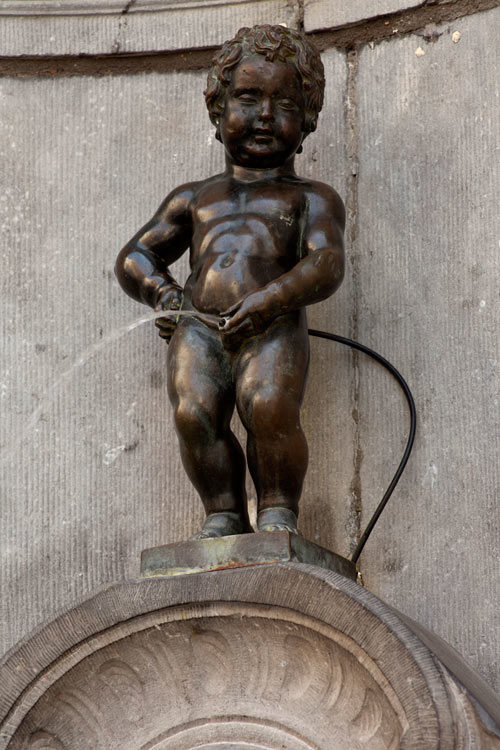
James said, “I want to recreate our first night,” and I felt a little romantic flutter. Once again the steak Diane was set on fire and the Mouton Cadet uncorked. A weird difference crept into our conversation; it turned serious, like a conversation two grown-ups might have.
“I never got to go to college,” James said, leaving unspoken his belief as a self-taught man, he had the best teacher possible. “Tell me about what classes you enjoy the most, how you picked your major.”
My inner nerd stirred from the grave I had buried her in and I launched into why I believed the accepted date for when wandering Asiatic hunters first crossed the Bering Strait to settle the Americas was much too recent, and why a crossing in 10,000 BC was more likely, a topic no one but me and my old girl crush Professor Pearson gave two shits about. James’ eyes glazed over but he managed to look interested for a generous three minutes before launching into his own crackpot ideas on the biological imperative that made men want to screw and women want to breed and how it affected stock prices, that old chestnut about the market rising and falling with skirt lengths. He boasted that his insights into the intersection of sex and economics made him a genius at picking stocks.
I knew that James didn’t go to college because he had been too busy running away from the girl he had impregnated (talk about your biological imperative!). He prided himself on being a self-made man and he had done a hell of a job, making a bundle selling Cadillacs, which he invested in the market, where that money had made even more money.
The wine was finished, James made a trip to the men’s with his vial of coke, came back bright-eyed to order coffee and cognac, and manically jumped into politics and the dastardly deeds of Richard Nixon. We talked and talked, James listening semi-respectfully to my opinions and lecturing me on subjects he thought he was an expert in, until the dirty looks from the busboys became impossible to ignore.
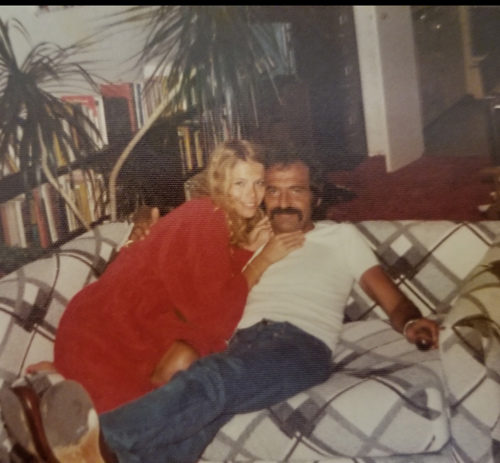
The evening had been romantic, exciting, and unsettling — who was this guy? — and I was ridiculously flattered that James actually wanted to talk to me. Most guys I had been with regarded the first sign of a serious conversation as a cue to stand up and go look for a beer. My tropical romance with James had been flighty, gossamer, a six-week one-night stand; our conversations had been about waterskiing, backgammon, whether James looked fat, the crowd at the Villa Vera, and the latest adventures of the French Canadian girls. I hadn’t had a semi-deep discussion like this since the drug-fueled all nighters in my freshman dorm. But that was with a bunch of still pimply, geeky 18-year-olds, huddled on the floor amid piles of dirty boy laundry. This was in a fancy restaurant with a handsome, sophisticated older man, a man who seemed to be as interested in my mind and my ideas as he was in my young blondness. It felt like a step into adulthood.
11 Common Items That Are Disappearing from Our Everyday Lives
As another year fades into the past, we thought it was a good time to look at a few things that are also becoming history. Some of these familiar items are almost gone, while others are just starting to vanish.
Neighborhood Mail Boxes
As mail volume is dropping, the U.S. Postal Service is adjusting their operations, and part of that move means taking out local drop boxes. Over 12,000 have been removed in the past five years.
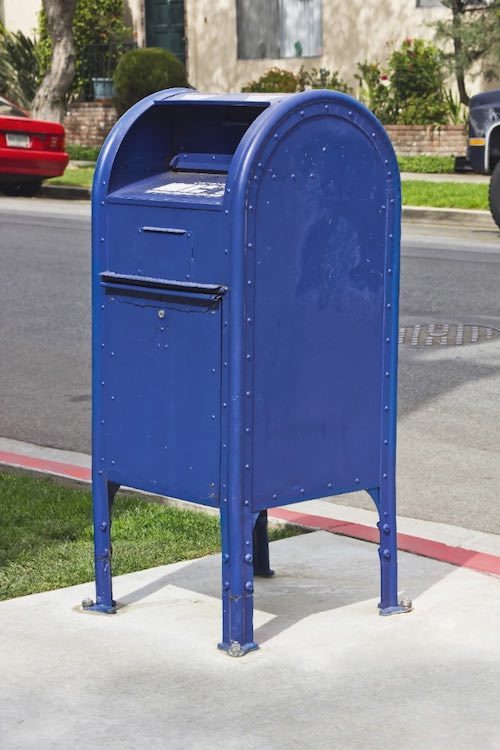
Incandescent Lightbulbs
The move to fluorescent and LED bulbs was accelerated in 2014, when the manufacture of energy-inefficient incandescent bulbs was phased out. New LED bulbs last so much longer that General Electric, the company that introduced incandescents to the nation, has decided to leave the light bulb business. When first introduced, LEDs were pricey, but their price has dropped 90% since 2008, all but assuring the death of the incandescent for home use.
Cable TV
In its peak year, 2000, cable television had 68 million subscribers. According to The Atlantic, That number has now dropped to 49 million as more consumers cut the cord and turn to streaming video services like Netflix and Hulu (or old fashioned rabbit ears) for their entertainment.
Bank Branches
Mobile banking has meant convenience for customers, but empty lobbies for banks. The top three national banks, Bank of America, J.P. Morgan Chase, and Wells Fargo, now have over 20 million depositors using mobile banking on their home computers or smart phones. In response, these banks have closed nearly 300 bank branches in the past year. More than 10,000 branches in total have shuttered since the financial crisis, according to The Economist.
Textbooks

Traditional college textbooks can cost more than $200 apiece. To cut costs, students are buying cheaper ebooks, professors are compiling their own course notes electronically, and publishers are offering online courseware. The trend is creeping down the educational chain, as educators replace textbooks in grade and high schools with online media.
DVDs and CDs
It’s significant that computer manufacturers, the people who made CDs and DVDs popular, are now backing away from the technology. Both Mac and PC computers are building units without optical disc drives. Since Windows 8, Microsoft’s operating system no longer is programed to operate an internal DVD player. Consumers are moving their music and movies to cloud storage and relying more on streaming media companies for everything else. For better or worse, the corner video store is already a thing of the past.
Department Stores

Only two major department stores have shown growth over the past ten years: Kohl’s and Nordstrom. Almost all the others are suffering. In the past ten years, J.C. Penney’s revenues have dropped from $20 billion to $12 billion. Sears’ revenues in the same period have dropped from $30 billion to $15 billion. In general, brick-and-mortar retailers are facing hard times. In 2016, 2,400 retail stores announced their closing. In 2017, the number was 5,000. It is expected to hit 7,000 in 2018.
Keys
In the future, you won’t open your front door with a key but with your Bluetooth-enabled smart phone. Two of the biggest lock makers, Kwikset and Yale, are already working on keyless security systems. Auto manufacturers are also developing secure systems for your phone that will unlock and start your car.
Landline Telephones
Today, more than half of American households rely on cellphones instead of landlines. But don’t expect hard-wired phones to disappear too quickly. Businesses that have millions of dollars invested in their phone systems will keep landlines around until they can afford to go cellular.
Restaurant Servers
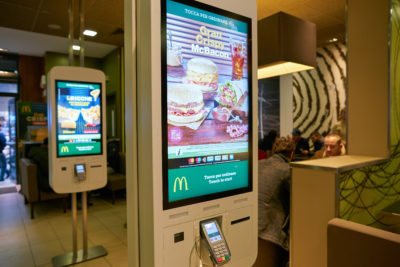
With Americans happy to order anything online, restaurant owners are starting to replace workers at their front counters with self-service kiosks. Panera Bread is already replacing cashiers with these devices. Some McDonalds have installed touch-screen technology to let customers order their meal or custom-build their burger. Wendy’s is planning to go in the same direction. Olive Garden now has tabletop tablets that allow diners to order and pay at their table without waiting for a server.
Blockbuster Video
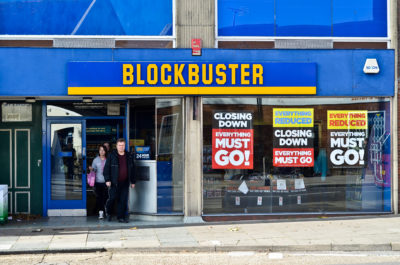
With hundreds of their former stores standing empty across the country, Blockbuster Video is considered one of the country’s most noticeable business deaths. Yet the Blockbuster name hasn’t completely vanished. There are 10 operated Blockbuster stores in America; seven are in Alaska.
Featured image: Shutterstock
Most Popular Saturday Evening Post Articles of 2017
As 2017 draws to a close, we share our most popular articles that were published this year.
1. 7 Reasons to Hang on to Your Landline Phone
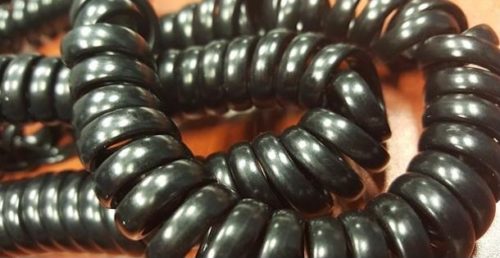
Thinking of ditching your landline? Make sure you understand the pros and cons first.
2. 10 Most Bizarre Inauguration Facts
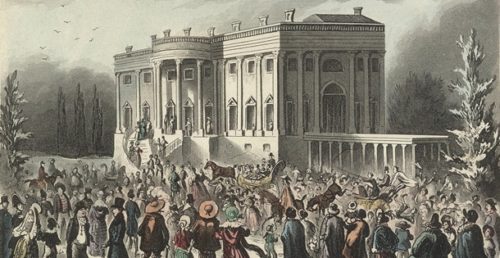
Do you know which president’s podium caught on fire, who gave the longest inaugural address, or who first wore long pants to his inauguration? Find out with these inauguration facts!
3. Coping with Estranged Adult Children
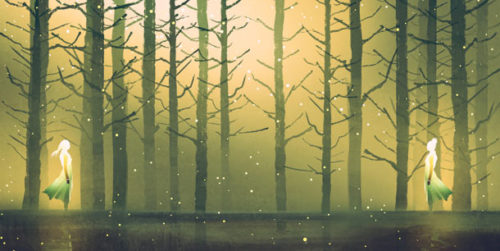
At what point do our adult children cease to be the adoring babies we once knew? One writer shares her very personal story. ‘
4. 8 Most Embarrassing Presidential Family Members
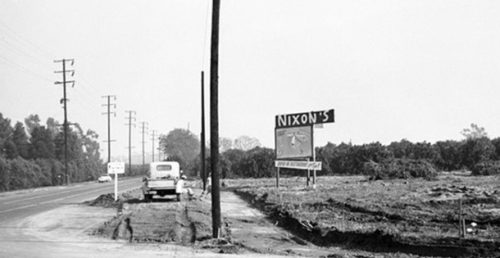
Which president had the most embarrassing relative? From drunkards to doofuses, here is our list of the 8 worst offenders.
5. The Average American Today and on the Eve of World War I
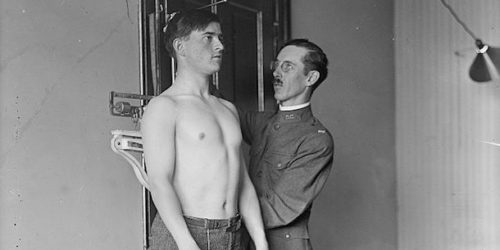
What it means to be an “average American” today is in many ways so different from what it meant a century ago, when the United States entered World War I.’
6. 8 Most Embarrassing Presidential Gaffes
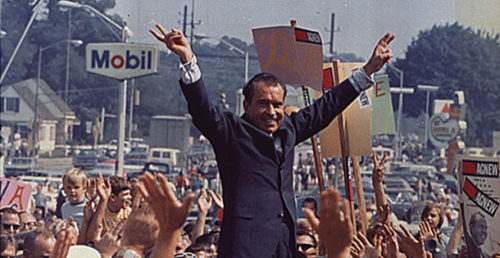
Gaffes, for any president, seem to be inevitable. Below is a list of the eight most regrettable moments from the highest office.’
7. The Nude Look Takes Over: 50 Years Ago
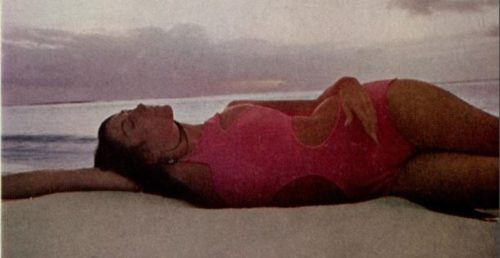
Fifty years ago, the Post featured bathing suits with low backs and cut-outs that were considered slightly scandalous. Even some modern readers decided this 50-year-old article was too much for them!’
8. The Art of the Post: The Rockwell Cover that Led to a Marriage
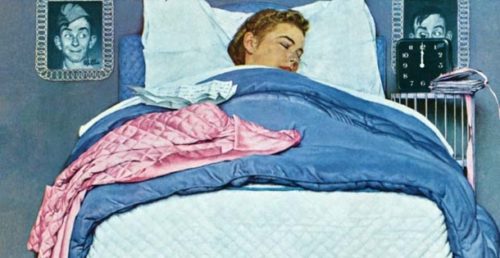
David Apatoff shares the story of the time Norman Rockwell inadvertently played matchmaker for a neighbor’s daughter.’
9. 11 Facts about Presidents and Approval Ratings

Which president was the most popular? Whose approvals fell most dramatically? Our 11 facts about presidential approvals show you the most loved and loathed.’
10. You’re Probably Alive Because of a Moldy Cantaloupe from Peoria
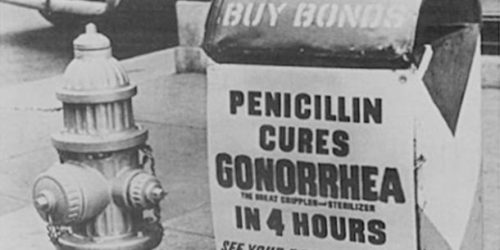
Scientists struggled to mass-produce penicillin until two doctors found the perfect moldy cantaloupe at a market in Illinois.’
8 Most Surprising Election Upsets
In American politics, there are no sure things. Candidates who seem to be the inevitable winners in contests can lose popular support — and elections — overnight. Here are our picks for the eight most surprising upsets in American elections.
1. John Quincy Adams vs. Andrew Jackson
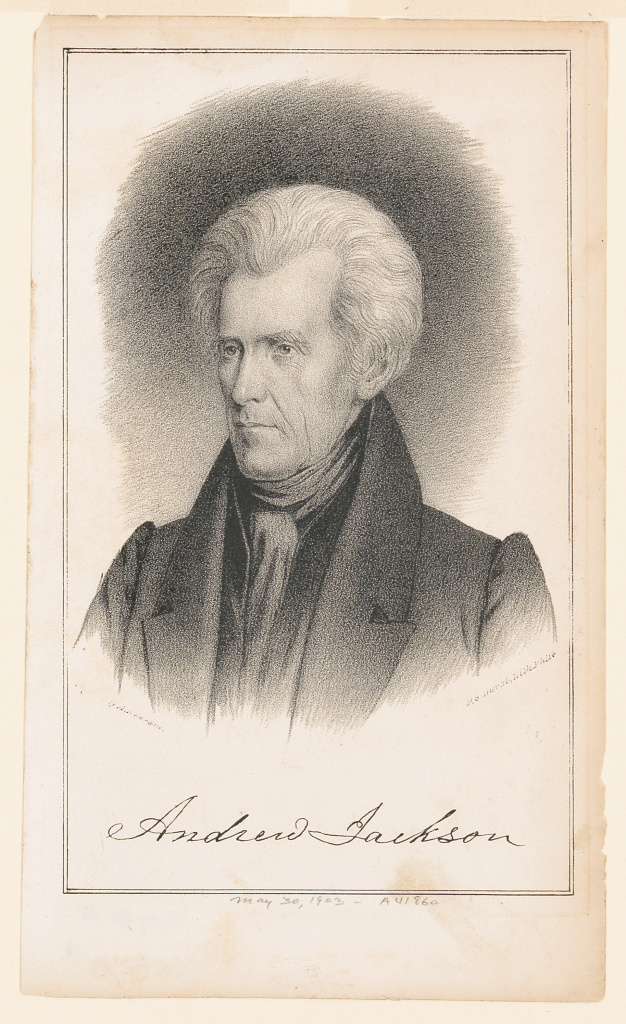
Because neither John Quincy Adams nor Andrew Jackson had the majority of electoral votes in the 1824 election, the House of Representatives would decide the winner. Speaker of the House Henry Clay despised Andrew Jackson. He went among the congressmen, drumming up support for Adams, who won the House vote and thus the presidency. Jackson was furious when Adams turned around and appointed Clay Secretary of State. Vengeance was his, though, when he beat Adams for the presidency four years later in what was considered to be one of the dirtiest campaigns ever.
2. John Polk vs. Henry Clay
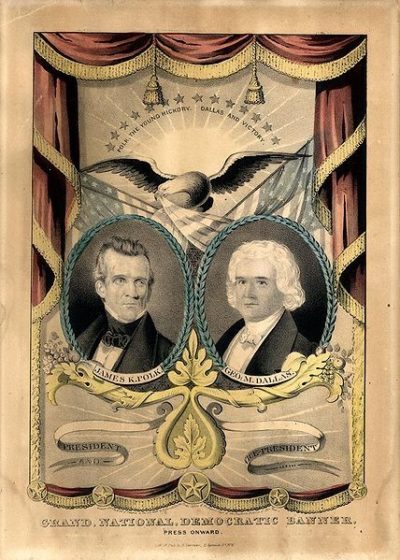
In 1844, the divided Democratic party settled on a compromise presidential candidate, James Polk of Tennessee. His opponent was the serial candidate, Henry Clay, in his fourth bid for the White House. Clay was a dynamic speaker, politically well connected, experienced, and extremely popular. On the other hand, the Democratic convention worked its way through nine ballots before finally nominating Polk, a man most people had never heard of. Yet Polk won because he campaigned on annexing western land to the union. Clay tried to walk a fine line between opposing the annexation of slave-holding Texas (which lost him support in the South) and being a slave owner himself (which lost him support in the North). Polk beat Clay by less than 40,000 votes.
3. Abraham Lincoln vs. William Seward
In 1860, the Republicans expected to win the presidency with their strong candidate, William H. Seward, a polished, influential former governor and senator from New York. His only serious rival for the party’s nomination was Abraham Lincoln, a politician from the back-woods state of Illinois who was little known in the powerful eastern states. But Lincoln proved the better politician. As a native son, he secured all the votes from the Illinois delegates. His campaign workers made sure to seat Lincoln supporters close to critical delegations. They printed counterfeit admission tickets to the convention to pack the hall with Lincoln backers and leave little room for Seward’s supporters. Through these tactics and back-room bargaining, Lincoln gained the nomination. In November he won the presidency because the anti-Republican votes were divided between three pro-slavery candidates.
4. Harry Truman vs. Thomas Dewey
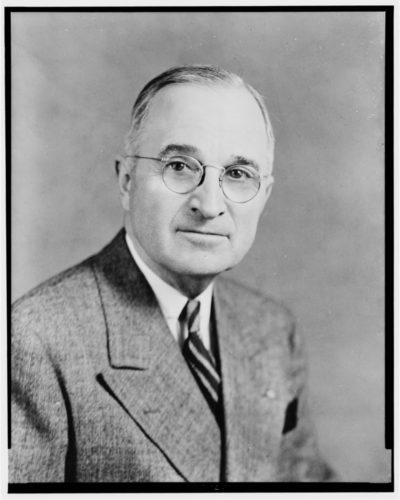
Well into election night, it appeared that Republican Thomas Dewey would take the presidency away from incumbent president Harry Truman. By late summer, Dewey’s 49% lead among likely voters overshadowed Truman’s 36%. But Truman campaigned vigorously, and by October that gap had narrowed to 50% to 45%. On election night, Truman gained an early lead that he never lost. The Chicago Tribune had backed Dewey and was so confident of his win that, before the polls closed, they printed that infamous front page with Dewey’s win as their headline.
5. Ronald Reagan vs. Jimmy Carter
Ronald Reagan won the 1980 election in a definitive and unprecedented landslide: 489 electoral votes to Carter’s 49. But a week earlier, Reagan’s victory was anything but assured. With just one week to go before the 1980 election, incumbent president Jimmy Carter had a slim but definite lead, despite America’s concerns about the economy and the Iran hostage crisis. But Reagan turned things around with his polished performance in the campaign’s one televised debate, which had one of the highest TV ratings of any show in the previous decade. The debate is remembered for Reagan’s quips, “There you go again,” and “Are you better off now than you were four years ago?”
6. Paul Wellstone vs. Rudy Boschwitz
Paul Wellstone was as under an underdog as has been seen in American politics. He was a virtual unknown in Minnesota where he was running for senator in 1990. He was a college professor with no prior experience in government, and his underfunded campaign was outspent 7-to-1 by his opponent. But he used his disadvantages to his strength, campaigning in a beat-up school bus wearing a work shirt and jeans, and running low-budget, humorous ads. He was helped when his opponents sent out a mud-slinging letter close to election day. He remained in office until his death in a plane crash in 2002.
7. Lisa Murkowski vs. Joe Miller
In 2010, incumbent Lisa Murkowski lost the Republican primary for Alaska’s senate seat to Tea Party favorite Joe Miller. Undaunted, she asked voters to write in her name on their ballots. 101,091 Alaskans did so, and Murkowski beat her opponent by several thousand votes. After months of legal wrangling over name misspellings, Murkowski was finally declared the winner in late December. She was the first senator in 50 years to win a write-in campaign — since Strom Thurmond in 1954.
8. Donald Trump vs. Hillary Clinton
Donald Trump was a surprise winner both of the Republican nomination and the presidency in 2016. Early in the campaign, some dismissed him as a novelty candidate. But straight talking alpha-male celebrities have successfully appealed to populist sentiment before. Consider ex-wrestler/Minnesota governor Jesse Ventura and action star/California governor Arnold Schwarzenegger.
Hillary Clinton’s loss to Trump must have felt all too familiar. She had been considered the natural choice in 2008 as well, but lost the Democratic primary to another outsider, Illinois junior senator Barack Obama.
Featured image: Shutterstock
North Country Girl: Chapter 28 — The Age of Aquarius Comes to Duluth
For more about Gay Haubner’s life in the North Country, read the other chapters in her serialized memoir. The Post will publish a new segment each week.
I didn’t tell Doug Figge about Wendi Carlson’s advice, that the key to enjoying sex is more sex. I didn’t have to. His mind was on the same track, the only track 17-year old boys’ run on, the track with the thundering locomotive of sex hurtling along, blowing all other thoughts away.
The day after the first man landed on the moon and I gave up my virginity, Doug called with the woeful news that Joe Sloan had emerged from his basement with powder burns and a singed shirt, accompanied by a powerful stink of cordite. His parents decreed that their house, including those forgotten bedrooms, was off limits.
Doug knew it was one of my mother’s class days. “Please, please,” he begged. “Let me come over. It will be okay, we’ll be quick,” he said as if that were a selling point. “Fine,” I sighed.
One of the things I learned from my first experience was that sex was messy, and should not take place on my mother’s ivory brocade French Provincial couch. Doug pulled into my driveway, I let him in the backdoor, and hurriedly escorted up him to my bedroom.
It was the middle of the afternoon and the sun streamed through my windows. I was shy about taking off my clothes in the summer glare, and not especially looking forward to seeing my fairly unattractive boyfriend naked either. I turned my back, stripped and slipped between the sheets, and there was Doug, nude and on top of me and ready.
I thought we were safe. My mother usually wasn’t home till three. But some vagary of the University of Minnesota’s college calendar or maybe the excitement of the moon landing had caused my mother’s class to be canceled that day. I heard a familiar car pull up to the house and thought “This is bad this is bad this is bad,” and tried to shove Doug off me. His eyes were squeezed shut, beads of sweat popping out on his wispy moustache; he was oblivious. “Doug Doug Doug,” I whispered hoarsely, as I heard the house door open and not only my mother’s voice, but my sisters’ as well. I pushed him harder and finally got him off me and he realized that my mother was home.
As Doug’s Corvair was in the driveway, my mother knew we were in the house alone, which she had strictly forbidden fearing exactly what had come to pass. Before Doug and I had a chance to find even our underwear, my mother flung open my bedroom door and lost her mind. She didn’t know whom to hit first. She whacked Doug about the head a few times, as he tried to find his jeans, the hell with his briefs, then she turned on me, as wordless as a banshee, unable to articulate what she had seen with her own eyes: her fifteen-year-old daughter having sex. I burst into tears and Doug made his escape.
That event is burned into my memory with almost a physical pain. I can feel the warm air coming in through the windows, pushing the sheer white curtains into the room. I can hear the torrent of my mother’s shrieks, and my entire body burning and blushing and trying to vanish into thin air. Out of the corner of my eye, while trying to duck my mother’s roundhouses, I see a blur that is Doug, holding his shirt and shoes, rushing down the stairs and out of my life.
A sadder but wiser fairy had come to undo one of my wishes, a wish that had gone horribly wrong. I no longer had a boyfriend. My mother forbade me to see Doug Figge ever again.
When I told Wendi Carlson about that shameful, sordid experience, she burst into peals of laughter, which shocked me into learning an important lesson: if your good friend cracks up at your sad story, it’s not the tragedy you think it is.
Egged on by Wendi, I held my gang of girlfriends spellbound for the remaining weeks of summer with the gripping tale of my mother catching me in bed with Doug Figge. “Tell it again!” they’d squeal, as we sat by a bonfire or dangled our legs in the water off a lakeside dock. I’d get to the point where Doug tore bare butt down the staircase, and they’d roar, squirting beer through their noses. Every time I re-told that tale of horror, it became less real, more like something that happened to another person.
“You need a new boyfriend!” cried Nancy, Wendi, and all the other girls. I wasn’t sure that I did. My romantic history consisted of a single date with Wesley Baggot, being publicly dumped by Steve LaFlamme, a forced make out session with a candidate for a skin graft, and having a boyfriend for six months that I didn’t really like and who never took me out once on a real date.
If I was going to have another boyfriend, I was going to pick him out myself. No more waiting passively for some boy to choose me; I had enough of that during those nightmarish ballroom dance classes. From now on, every day was going to be Sadie Hawkins Day.
I rejected all the efforts my pals made to fix me up. I studied the eligible guys in the packs that hovered around us, looking in vain for potential boyfriend material, someone who was good-looking and smart and funny. My imaginary future boyfriend had to go to East High, so he could hold my hand in the halls and take me to a school dance. I was through with boys who went to weird other schools, unless Joe Sloan reappeared.
Maybe it was this gritty new determination, maybe it was getting rid of my virginity at fifteen-and-a-half: I grew a backbone. I found I could talk, and laugh, and flirt with boys, ignoring the voice in my head that told me I sounded like an idiot.
Now I needed to shed my gawky nerd look, my face hidden behind those oversized tortoise-shell spectacles with the Coke bottle lenses. My mother was still not talking to me, just shooting me looks that alternated between disappointment and disgust. I turned on my father at every occasion, begging for contact lenses. Dad preferred that I remained unattractive; he didn’t know that the worst had already happened. My eye doctor won the argument for me, pointing out to my father that contacts would slow down my eyes’ deterioration to Mr. Magoo-level near-sightedness, and eliminate the need to buy new and thicker glasses every year. I got my contacts and I promptly lost one in our gold shag carpet. So much for my dad saving money on my eye care; it was back to the doctor to order another $30 contact. Now both my parents were mad at me.
Who cared about parents when there was a potential boyfriend somewhere out there, a boyfriend who could now gaze directly into my green eyes, while stroking my hair. I hadn’t allowed a scissor to come near my head for months and my hair now flowed halfway down my back, an unremarkable brown, but thick and shiny with youth and health, perfect hippie girl hair. I also decided to stop letting my mother pick out my clothes. During our annual shopping trip to Minneapolis I ditched my mom and sisters in Dayton’s Back to School section and found an incense-smoky store where I bought a purple leather fringed jacket, a collection of gauzy Indian shirts, and embroidered bell bottom jeans. Suddenly instead of a four-eyed geek with a bad haircut, there was a cute girl in the mirror. My third wish, a wish so improbable and so desperate that I had never consciously acknowledged it, had been granted.
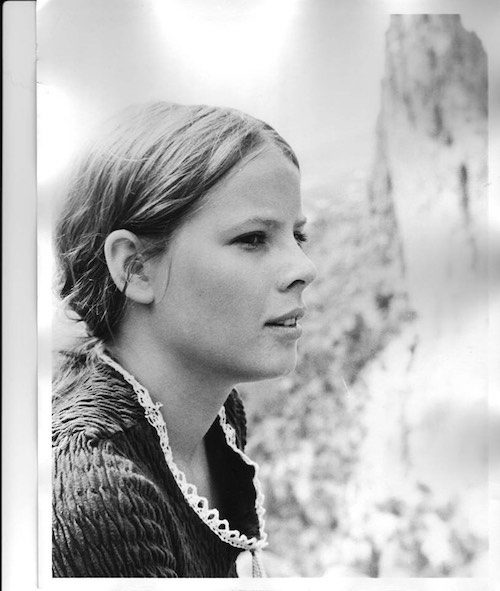
***
Late in August Walter Cronkite reported that thousands upon thousands of hippies had descended on a farm in upstate New York for a three-day music festival. The six o’clock news never showed any of the music, only the miles of traffic and abandoned cars and then finally half-naked people rolling about in the mud, Walter tut-tutting away like a maiden aunt. It looked amazing, the most fun a teenager could have. I watched desolate, knowing my tribe was out there, listening to the music I loved, taking the drugs I wanted. As always, life was happening somewhere else.
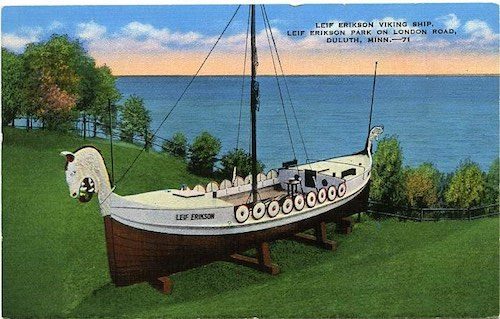
But Woodstock unlocked something in the teenagers of Duluth. As if summoned by the Pied Piper, throngs of kids coalesced in scraggy bands on the rolling green lawns of Leif Erickson Park, boys strumming guitars and girls twirling their long gypsy skirts around and around. At the downtown Woolworth’s next to the turtle tank I found a rack of buttons with peace symbols and “Make Love Not War” that I pinned on the lapel of my fringed jacket. The Age of Aquarius had reached Duluth.
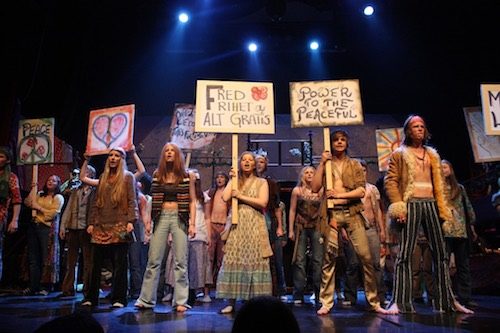
On the first day of school, I walked down the East High hall into a different world. A whole subset of druggies and hippies had sprung up like dandelions. There were dozens of kids in tie-dye, patchouli oil was used way too liberally, and almost every boy, including the jocks, had hair that brushed the collars of their shirts.
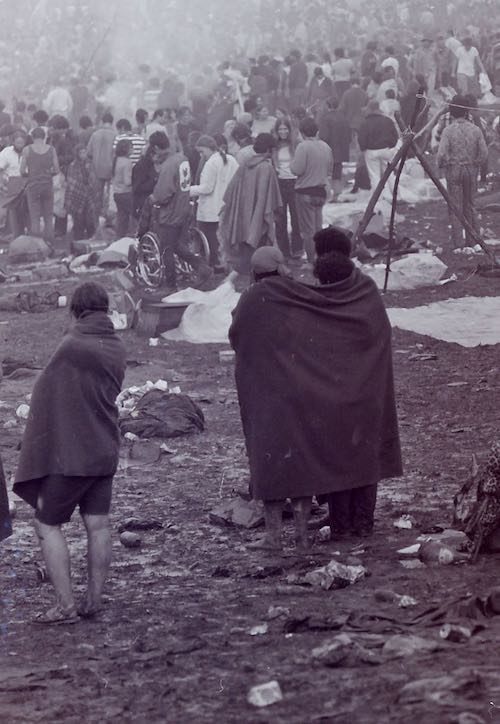

I made my way up to the third floor, to Mr. Burrows’ two-hour, buttock-killing, smart-kids-only, enthralling American History and Literature Class, an educational jewel that was more fascinating and more informative than any college course, even if it did hew to the Famous White Men model, with nods to Anne Bradstreet and Emily Dickenson. As I slipped into my usual seat next to Nancy Erman, she nudged me, nodded her head sideways, and daringly whispered “New boy. Your type.” Mr. Burrows’ thundering brow turned toward Nancy at this violation of his rule of absolute silence. She gave him a twinkling Nancy smile, and, mollified, Mr. Burrows went back to the chalkboard to write: “A true relation of such occurrences and accidents as hath hapned in Virginia. John Smith, 1608,” and we were off to the races, three hundred years of history and literature to cover in nine months.
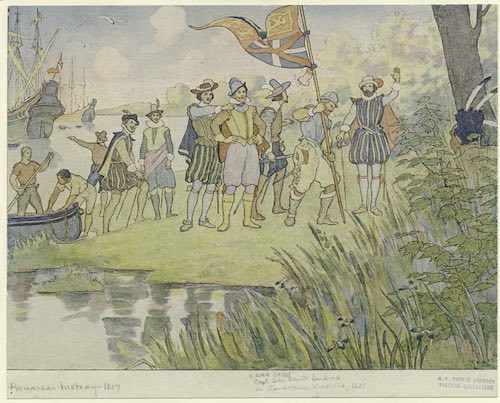
I snuck a glance in the direction Nancy had nodded in. Sitting all alone against the back wall, lit like a Renaissance angel under the slanting autumn light that poured in through the diamond-paned windows, was a boy with long dark hair that reached his shoulders and John Lennon wire-rimmed glasses. Beneath the glasses and the hair was a cherubic face, as round and sweet as an apple, a face that wore a serious, studious expression that reminded me to turn, reluctant and hopeful, back to my own interrupted note-taking on the founding of Jamestown.
This boy was Michael Vlasdic, my first love.
He was heart-meltingly handsome, and I knew that he had to be smart to be in Mr. Burrows’ advanced class. Two hours later, when Mr. Burrows allowed questions and comments, Michael sat silent, although I did see him occasionally smile, revealing adorable dimples that would be so much fun to kiss.
Michael Vlasdic was also in my lunch period, where I clocked him sitting at the back of the raucous East cafeteria with Roger Dennison, another rare new kid, who was good-looking in a blond, high-cheeked, Slavic way despite a nose like a jagged ski run, and with my old friend Eric Olson from elementary school. Eric was now known as Needle, not for his use of intravenous drugs but for his extreme skinniness. Roger and Needle both sported nicely shaggy hair, though not as long as Michael’s.
A year ago, I would not have been able to walk within ten feet of a boy I liked without my stomach flipping over and my tongue gluing itself to the roof of my mouth. But good luck and bad experiences had given me confidence. I had shed my virginity and my goofy glasses and I had Michael Vlasdic in my sights.
The new, sophisticated me plopped down uninvited among the three boys, making sure that I was next to Michael, and finally put my mother’s advice—“Just walk up to a boy, say hi and start talking”—to the test. I smiled, asked Roger where he was from (Colorado, his father worked for the Air Force and had been transferred to Duluth’s tiny base), talked to Needle, another smarty pants, about our classes, and finally turned to Michael and said “I like your glasses.”
I watched his face and my heart gave a small thump. I thought, I know this person, I have been this person, struck dumb at the prospect of talking to the opposite sex. It was as if I could read what was going through Michael’s mind: “What does that mean? Is she making fun of me? Or should I say thank you and then say I like your shirt?” I could tell he was weighing all his options as if one wrong word could open up the cafeteria floor and send him down to Hades, while the other kids laughed and pointed at him.
It was too painful. I jumped back in and carried the conversation single-handedly (look mom!) until the bell rang to send us off to class. That was also my signal to make my move. “So Michael,” I said, “What are you doing Saturday night?” All three boys exchanged shocked, mystified looks, but there was none of the horror that I used to see on the faces of the boy I asked to dance at Cotillion.
Michael quietly admitted that he had no plans for Saturday night and then looked as if he were waiting for a stinging, “Oh I’m going to a fun party” from me.
I took a breath and said, “Do you want to go out, go do something?” A beatific smile crossed Michael’s face, revealing those adorable dimples that I could have kissed right there and then. I took this as a yes. We scribbled phone numbers in each others’ notebooks and I left feeling that little squeeze of my heart and tingling between my legs that I got listening to Robert Plant moan “The Lemon Song” or re-reading the dog-eared pages in my copies of Lolita and Candy that I hid between the mattresses.
North Country Girl: Chapter 19 — Duluth Dentists Gone Wild
For more about Gay Haubner’s life in the North Country, read the other chapters in her serialized memoir. The Post will publish a new segment each week.
My dad would shake his head over the Cs on my report card from gym and home ec, ignoring the As in math, history, science, and English (Bs in Spanish); did he not know who I was? I had always excelled at anything that required brain power; ask my fingers or legs or arms to do something, and I was as helpless as an earthworm.
My grades were good enough that my parents had no compunctions about pulling me out of seventh grade for a week. A dental convention in Mexico City was the tax-deductible impetus for a tour through Acapulco, Taxco, and Cuernavaca. My dad thought the exposure to a foreign culture would be good for me. Heidi was not yet two, and Lani, as usual, was the middle child afterthought: they got left at home with the sitter. I, the smart one, the lucky one, the anointed, flew south with my parents and grandparents.
My father’s favorite thing was to travel without hotel reservations. I was not on the trip to the New York City where my parents had to spend the night in a second-floor walk-up hotel in Harlem, back when Harlem was Harlem. I was on the family skiing trip in Wisconsin over a holiday weekend, when we drove for hours in the dark, passing one neon NO VACANCY sign after another. In the middle of the night we finally stopped at a hunting lodge that had closed for the season, but whose owners had stayed on. By a miracle this lovely old couple were awake and felt sorry enough for the exhausted-looking family to let us spend the night in one of the unheated cabins. They even made us breakfast.
This, however, was an American Dental Association trip, which meant fancy hotels, bus tours, and meals at restaurants where the most Mexican item on the menu was a margarita. In Acapulco my parents and I were given a luxury two-bedroom suite at the El Presidente hotel, as evidently the roll away bed had not yet been introduced to Mexico. Floor to ceiling windows looked out over the famously beautiful Acapulco Bay, a vision I thrilled to again while watching the first season of I Spy, and then, eight years later, from the balcony of a high-rise condo, while making out with a playboy from Chicago who was twenty-two years older than me.

My first day in Acapulco I was pulled sputtering and floundering out of a fierce undertow by a sharp-eyed dentist while my own dad was getting drunk at the bar. Heavy drinking Minnesota dentists plus cheap Mexican booze equaled a non-stop party that started in the morning with Bloody Marias and ended when someone got hurt or sick. Dentists were jumping off roofs into pools, getting into fistfights, laughing so hard on burro rides they pissed themselves. I was the only kid in this group, and as I was small and quiet (even when drowning) I went as unnoticed as a salt shaker, even by my own family.
I finally piped up during a drunken dinner at a fancy restaurant when I saw a flaming baked Alaska cross the room and was struck that here was the height of sophistication. Cake, ice cream, meringue, and a fire! If only I had a baked Alaska of my own I could die happy. I was certain that my request would not be granted: the usual answer to “Can we have dessert?” at a restaurant alternated between concern for our teeth from my father and “We have ice cream at home” from my mother. But my dad was tipsy and in a benevolent mood and my mom was too busy worrying about what drunken dental hijinks were in store that night. I felt like a princess when the waiter set the blue-flamed baked Alaska in front of me. It was Neapolitan ice cream set on a slice of chocolate cake, surrounded by hot, sticky, marshmallow-y goo, and it was delicious.
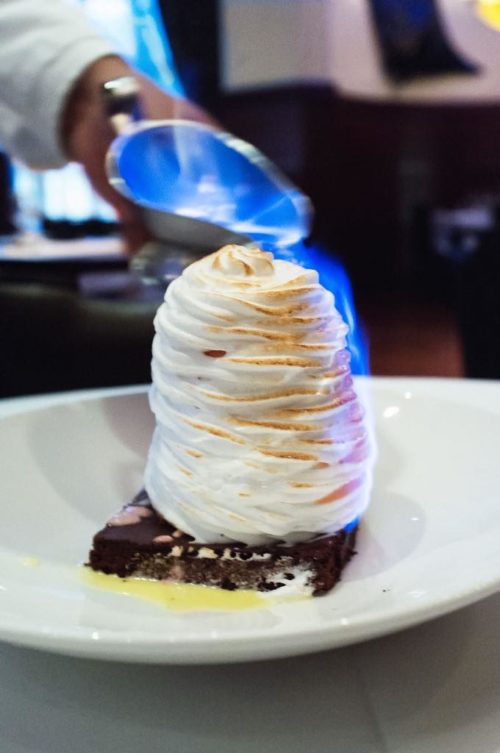
The last day in Acapulco the dentists who were not too hungover and their wives gathered around a open space between the hotel and the beach to watch three men dressed as Aztec warriors fling themselves off a 40-foot pole, anchored by vines knotted around their ankles. While I watched agog as they twirled around the rotating pole, I overheard two dental wives discussing the night before. Little pitchers do have big ears. A taxi driver had offered to take some of the dentists and their wives to see a “show” at a whorehouse.
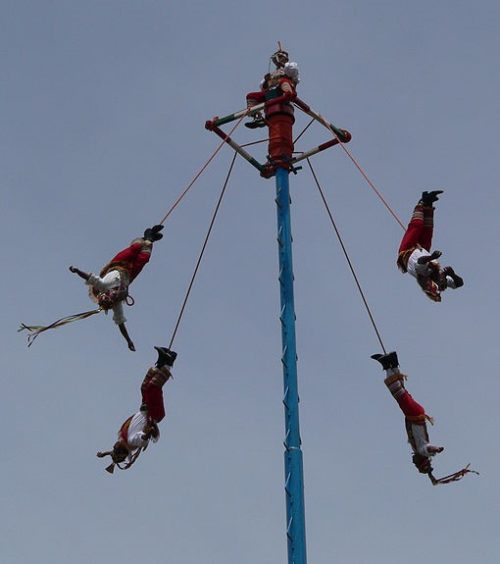
During the show, one of the group, in a perfect storm of drunkenness, decided to participate. But it was a not a dentist, but Mrs….here the woman’s voice dropped to a whisper, so I’ll never know which of the wives, hiding behind the cat’s eye sunglasses and under ugly straw hats purchased for way too many pesos from the voracious beach vendors, women who were sun-burned or coping with Montezuma’s revenge or hungover or all three, which of these demur ladies had ripped off her clothes and jumped on to the stage at the whorehouse and into the arms of the leading man.
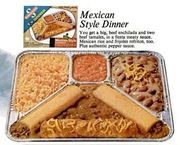
Once away from the Acapulco nightlife, the dentists dried out and recuperated in Taxco and Cuernavaca, pretty colonial towns with pastel houses covered in bougainvillea, that featured boring tours of silver and pottery stores. In Taxco my father stepped off the tour bus and, instead of heading for the air-conditioned hotel for lunch, took me into the most flyblown, dingy restaurant on the plaza. We sat by the greasy front window at a table as sticky as flypaper, even though miraculously the 500 flies buzzing around our heads seemed able to resist setting down there, preferring to wait till the food arrived. As my dad was ordering the enchiladas suizas (how did he even know what that was? The only Mexican food I had seen in Duluth was in a Swanson’s Mexican Style TV dinner, where every brown component in the foil tray tasted the same), my mom and grandmom appeared at the open doorway, afraid to step inside in case germs clung to the soles of their shoes. Both moms ordered us to get out of there and not touch anything. I dutifully obeyed, but my dad just grinned and tucked into a huge platter of green and white something, while the waiter stood behind, waving off flies with a menu. My grandmother turned bilious just looking at the enchiladas; my dad finished the whole thing, burped, gave the waiter the equivalent of 90 cents, and felt absolutely fine.
My mother was not so lucky. She not only got sick from almost everything she ate, she had a terrible reaction to the smallpox vaccine the Dental Association recommended she get before traveling south of the border. She spent the night of the big formal gala at the actual convention in Mexico City puking and watching her arm swell up to the size of an elephant’s trunk. I was sent off to find my dad at the party, which was held on the top floor of our fancy hotel. He refused to leave, being several margaritas in and, never having experienced any illness himself outside of killer hangovers, didn’t believe anyone could get sick from a shot. I grabbed some food off a tray and went back to our room, my book, and the scary sounds emanating from the bathroom.
I was now a sophisticated world traveler. I had been out of the United States! I never missed an opportunity to mention my travels, until even my best friend Wendy finally asked me to shut up about Mexico. But summer camp provided a whole new audience. I embellished my travelogue for my bunkmates, giving myself a handsome 16-year old Mexican boyfriend, Andres. In this new version, it wasn’t a balding orthodontist from Edina who pulled me out of the undertow in front of the El Presidente hotel, it was Andres, who then fell instantly in love with me, a reverse Little Mermaid. I spun a tale of Andres sneaking into our suite when my parents were out; how we would make out passionately on the sofa overlooking the lights of the bay. I confessed that Andres tenderly tried to stick his hand under my shirt, but I held him in check, despite his protestations of undying love. I told and retold the story of my imaginary romance so often that I almost came to believe it myself. For the two weeks of camp, I was the most popular girl in our bunkhouse, and even the counselors looked at me as if I might be interesting.
I came back from camp that seventh grade summer, basking in my fraudulent role as resident boy expert and sadly aware that I didn’t want to go to camp anymore. What if all of those camp girls who boasted of boyfriends and their extensive knowledge of sex were just big fakers too?
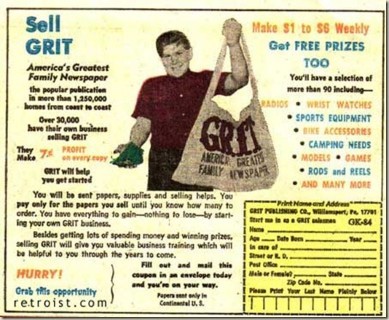
I had just gotten home when Wendy called to tell me that she had overheard Rick Bryers (one of my heartthrobs) and Steve Puloski talking about me. Two boys who knew I was alive? I couldn’t imagine what they had to say. Could they possible think I was cute? Wendy in all her innocence or malice, told me “Rick told Steve he had seen you at the Northland pool” (my racing thoughts: I did look adorable in my first two-piece suit, a red and white Hawaiian floral, what was Rick Bryers doing at Northland Country Club and….HE NOTICED ME AND KNEW MY NAME) “and Steve” (who was universally despised by the entire seventh grade for many reasons, including putting Fizzies in the biology teacher’s fish tank and showing up at all of our houses trying to sell Grit magazine or packages of seeds or greeting cards) “Steve said to Rick…flat as a board, huh?” After that there was a roaring in my ears. I hung up the phone and vowed I would never go to school again.
But I did, and eighth grade followed seventh as if it were Ground Hog Day: I was the star pupil in English, math, science, and even boring Minnesota state history. I was still chosen last when sides were picked for volleyball (why couldn’t the gym teacher simply divide the class in two?) and still regularly forgot to bring my gym uniform to school. I endured a second year of being taught useless domestic skills in home ec. I forgave Wendy for squashing my dreams of true romance with Rick Bryers and spent as many weekends as I could at her weird dorm apartment. We’d flip through that month’s Seventeen magazine, debate the merits of Napoleon vs. Ilya, review every comment made to us by a boy during the past week for signs of infatuation (“When he asked me what the caf had for lunch, did he want to sit with me?”), and try to figure out what the popular girls had that we didn’t (which was, in the end, their popularity, which made everything else — their clothes, their hair styles, their manner of speaking — admirable and something to emulate). We were two glasses-wearing, violin-playing nerds, but we had each other.
North Country Girl: Chapter 15 — Saturday Matinee at the Norshor
For more about Gay Haubner’s life in the North Country, read the other chapters in her serialized memoir. The Post will publish a new segment each week.
One muddy grey spring afternoon, I was trudging home at the back a gaggle of Congdon fifth graders when a man approached us. In the early sixties there was no “stranger danger” (thus so many kids being dropped off in toy departments while their moms shopped). Duluth children were raised to be polite and helpful so we stopped and listened to him when he said “Hey kids, do you like movies?” He had a special offer, just for us. Every Saturday, there was going to be a matinee for kids at the Norshor Theatre: a cartoon, a serial (whatever that was), and a movie. He had strips of tickets printed up with the dates and the names of the movies. Each ticket was a dollar, but you had to buy the whole series of eight movies. Of course, none of us had eight dollars, I doubt if we could have come up with 80 cents among us. Not a problem, he was going around to all the elementary schools in Duluth and would be back in a few days. We could buy our tickets then.
I was giddy with excitement. I was almost too old for Disney movies, those once-a-year treats. I would have willingly sat through any movie just to go to the grand old Norshor, a vaudeville theatre that had undergone only slight renovations to show movies. There were hundreds of scratchy maroon seats, extending up through a never used balcony, seats that released with a loud “thump” when you stood up, annoying everyone around you. (My sister Lani would spend the entire ninety minutes of the Disney movie going up and down, up and down.) The ladies’ room had floor to ceiling mirrors, chrome stand ashtrays, leather ottomans with brass studs, and Art Deco wallpaper of green and pink bubbles my grandmother would have swooned over. Best of all was the snack bar, which I had always viewed as Moses did the Promised Land. I pictured myself at the kids’ movies, standing in line at the snack bar, fondling a dime liberated from the ashtray in my dad’s car, pondering: buttered popcorn? Jujubes? Sno-caps? Maybe an ice cream bar? Or a hot dog, ketchup only, plucked from its rotating metal bed. There was also a barrel of pickles for those misbegotten souls who wanted to eat a pickle while watching a movie.
I wheedled the eight bucks from my dad and along with most of my classmates, eagerly awaited the “movie man” on the day of his return.
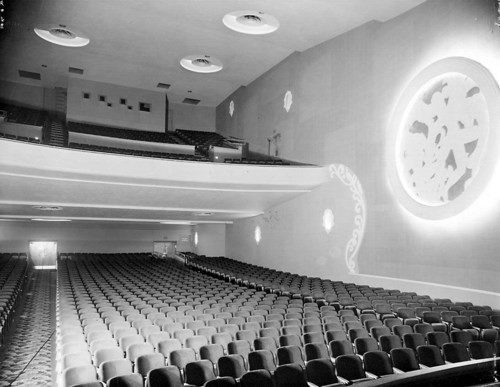
The surprising thing is that there actually were movies. Well, for a while. The girls spent the week before the movie discussing who was going and who we would sit with. Would there be attempts at hand holding or even kissing? Then there was the rare thrill of mixing with kids from other schools. Would the tough west side greasers-in-training pick fights with the well-bred east side boys?
For a few successive Saturdays, hordes of kids, jingling with pocket change, boarded the bus downtown. Crabby old ladies learned to stay home those afternoons. We took over the entire theatre; they even opened the balcony to accommodate us.
The cartoons were the same black-and-white Betty Boops and Merrie Melodies I knew and loved. The serial turned out to be The Lone Ranger (with a different Lone Ranger and Tonto from the TV show) and the movies were marvelous. I saw Journey to the Center of the Earth, The Lost World, The Boy and the Pirates, and The Day the Earth Stood Still. I came home as if waking from a wonderful dream, slightly sticky from spilled pop, which was served in dissolving wax cups with no caps. And then it was over. The movie man skipped town, or the Norshor got tired of having to clean up after 300 kids had spent two hours having popcorn fights and pelting one another with Jujubes. The last straw many have been when Billy Shaw got the brilliant idea to smuggle in a can of Dinty Moore beef stew to the first row of the balcony, lean over while making puking sounds, then dump the contents of the can on the kids below. I looked at my four unused tickets and thought again what a cruel world this was.
***
The summer after fifth grade my family took the train to Seattle for the World’s Fair. It was a last grasp at the golden age of train travel. We had our own sleeper car, with a tiny bathroom and narrow bunks that miraculously appeared each night, thanks to a red-jacketed porter. We ate our meals in the dining car, at tables with heavy china and silverware, white tablecloth, and a single red rose in a cut glass vase, which vibrated gently as we sped along. We spent our days in the dome car, where the towering grandeur of the Rockies compelled me to take my nose out of a book for once.
It seemed that what my father, who unilaterally controlled the money and the agenda, enjoyed most about this trip was denying my sister Lani and me anything we really wanted. Scattered throughout the World’s Fair were “Pick a Pearl!” stands with tanks full of oysters. For a dollar, you selected an oyster out of the tank, which would be opened on the spot, not to eat, but in hopes of finding a pearl. I pressed my nose against the glass display of lustrous white and pink pearls big as marbles that had been found in the oysters (by whom? And why didn’t they keep their pearls?) and begged in vain for a go. My father, a gambler who had lost thousands of dollars playing poker badly or investing in sure thing oil wells, refused to part with the buck. That there was one of these stands around every corner was a constant irritation to me, like a grain of sand that had snuck into my shell.
I was also poked in the eye by the Space Needle, unavoidable from anywhere at the fair. I knew that at the top of the Space Needle was a revolving restaurant, a ride that you can actually eat on! But the Haubner family could not eat there or even take the elevator up to look at the lucky diners going round and round: my father said the line was too long. We couldn’t see the puppet show at the French pavilion, “Les Poupees de Paris”; my father thought it might be inappropriate for kids (it was a puppet show). I told Lani it was actual poops on stage and she threw such a fit at not being allowed to see this wondrous thing that we had to leave the fair immediately. Dinner at the Chinese pavilion ended in a universal family melt down, complete with tears and shouting when Lani and I spotted entire bags of fortune cookies for sale, which my father refused to buy on the grounds that we didn’t want the cookies, just the fortunes (that was true, but still: a bag of fortunes!). After Seattle we went to Vancouver Island, where I got to look at other people enjoying afternoon tea in the rose garden of the Empress Hotel. These fortunate few sat at wicker and glass tables covered with china pots, gilt-edged teacups, and tiered silver trays lined with paper doilies that held gleaming pastries and tiny frosted cakes and sandwiches with the crusts cut off. No tea for me. (Dad: “You won’t like it.”)

After the vacation of forbidden treats was behind me, I spent the next two weeks of the summer at Wanakiwin, hoping to bask in my status as a returning camper, only to find myself once more relegated to the beginners´ group in tennis, boating, and horseback riding. But there was a new crew of bunkmates who were eager to share a fount of sexual misinformation, including the news that you could get pregnant if you French kissed a boy. When another girl (not me, I was too embarrassed to reveal my ignorance) asked what a French kiss was, two girls volunteered to demonstrate at length. Lani was at camp again too, but I only saw her on the far side of dining hall, refusing to eat anything but plain spaghetti noodles and peanut butter and jelly sandwiches.
The minute my parents picked Lani and me up from camp, we began our “Can we go to the pool? Can we go to the pool?” chant. My mother was a hundred months pregnant, and maternity swimsuits had not yet been invented. She was not going to the pool. Somehow my parents wrangled special dispensation from the lords of Northland Country Club, and found a 16-year-old girl to drive Lani and me to the pool, where she completely ignored us, spending all her time perfecting her sunburn and attempting to attract the attention of the lifeguard. He was too absorbed in trying to never have to go in the pool (“Get back in the shallow end or get out!”) and keeping his whistle in a perpetual twirl.
On August 21st, to my father’s distress, a third Haubner girl was born. Girls I barely knew showed up at my house to ooh and aah at the adorable pink bundle that was baby Heidi (who had a narrow escape from being named Hedda), and begging to hold her. Shortly after Heidi appeared, Nana flew in from Aberdeen to take over baby care, shooing away girls who might have become my friends (“No you can’t hold this baby! The idea!”). Lani went into hiding for six months.
Somehow we all knew there would not be a Jack Haubner Junior, so at Heidi’s birth I was immediately elevated into lawn maintenance, the traditional realm of sons. My father had tried one experiment to see if I would be an acceptable substitute for a son in other areas, like fishing. In early spring, when the ice first starts to thaw, was the annual smelt run. The small silvery fish, which were more bones than flesh, were so thick in every stream and river that you could scoop them out of the water. It was the duty of every male Duluthian to go out with a net and a bottle of Seagram’s and return with 80 pounds of smelt for the freezer, where they would remain until they were thrown out to make room for next spring’s catch.

I was lying on the ratty couch in the basement rec room, knees tucked up, nose in book. My father yelled down the stairs, “Gay, we’re going smelt fishing!” I had been smelt fishing once before and had spent the entire time in the car listening to the radio and punching Lani. I had no desire to go again and my legs were curled under me for a reason: “My stomach hurts.” My father had no patience for such malingering. He rousted me off the couch and into several layers of non-waterproof clothes, and we were off to the Knife River. If you don’t feel at all well, it’s not a good idea to stand around in three feet of snow, watching fish being killed. After several netfuls of fish had been sloshed into the huge bucket beside me, I threw up. “I told you I feel sick,” I moaned as my father gazed at my puke in disbelief, as if I had just come up with a new talent for barfing at will. Then I shit my pants and got to go home.
8 Most Embarrassing Presidential Family Members
Some presidents have had the good luck to be surrounded by relatives who helped build their public image. Other presidents aren’t so lucky. They continually wonder what their wife, child, brother, or in-law will next do to poach the news cycle and embarrass the administration.
Here are eight presidential family members who proved more of a liability than an asset.
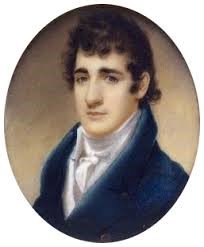
(The Metropolitan Museum of Art)
1. John Payne Todd, Dolly Madison’s son from her first marriage, seemed to have been trouble from the start. John was often jailed for assault, disturbing the peace, and “shooting incidents.” He also had a serious gambling problem that landed him in debtor’s prison until his stepfather, James Madison, bailed him out.
President Madison gave John a chance to prove himself when he sent the young man with a diplomatic team to Russia in 1812. Diplomacy didn’t interest Todd. Women did. He ceased contact with his parents and spent his time with a countess. When the diplomatic team moved on to Germany, Todd decided to go to Paris instead. For the next three months, he spent a fortune at restaurants, casinos, theaters, and other places of Parisian entertainment.
He came home in 1815 after staying a year in Europe without doing anything except piling up $10,000 in debt.
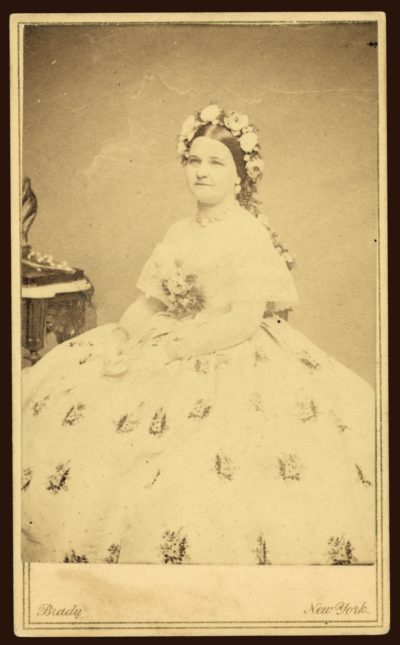
2. Mary Lincoln was a complex character. She undoubtedly helped promote Abraham’s career, prodding him to pursue higher offices and playing the hostess at party gatherings. But Mary also craved luxuries. In Springfield, Illinois, it might have been easy to control her spending, but when she and her husband arrived in Washington, things got out of hand. At a time when many Americans faced the hardships of life during the Civil War, she began an extensive redecoration of the White House, overspending her budget by 30%. She also blew a small fortune on her wardrobe and feared if her husband wasn’t re-elected, he’d have time to see her bills.
Insiders also claimed she stole from the White House. “Stealing was a sort of insanity in her,” said a lawyer who knew the family. She billed the government for materials she kept and even billed for a nonexistent employee so she could pocket the income.
Had Lincoln lived, she would have come under scrutiny for her lavish self-indulgence, but in the wake of the assassination, the country was ready to forgive her anything.
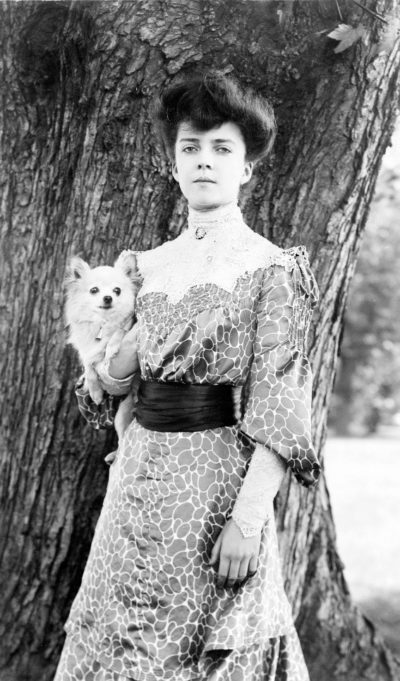
(Library of Congress)
3. It was clear to America that Alice Roosevelt was certainly the daughter of her impetuous, noisy, and attention-seeking father, Theodore. After arriving in Washington, she soon earned a reputation for her rebellious spirit, flirtatious manner, reckless behavior, and talent for shocking people. She smoked cigarettes in public and was seen placing bets with a bookie. Attending receptions in gowns of her own personal color, “Alice Blue,” she would flirt with men while her garter snake wriggled on her blouse. Far from being a gracious, sweet-tempered first daughter, she was witty or, as some said, she had “quite a mouth on her.” At parties, she would say to newcomers, “If you haven’t anything good to say about someone, come and sit by me.” After repeatedly walking in to the Oval Office to give her dad political advice, Teddy told an advisor, “I can either run the country or I can attend to Alice, but I cannot possibly do both.”
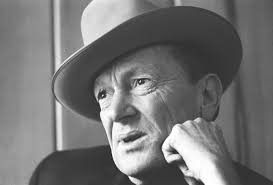
4. Brother to President Lyndon Johnson, Sam Houston Johnson had a problem with alcohol. It became Lyndon’s problem because brother Sam, when intoxicated, spoke freely with anyone, particularly reporters. After leaking confidential information once too often, Johnson brought Sam into the White House, which he was unable to leave without the Secret Service following him and his conversations.
5. Donald Nixon, Richard’s brother, had dreams of becoming a fast-food king. In 1957, with his hamburger stand in trouble, Donald borrowed $200,000 to shore up his business. The lender was Howard Hughes, a major defense contractor. Richard Nixon had trouble convincing anyone that he, then vice-president, had not traded favors with Hughes for the loan. During the Watergate investigation, investigators learned that Donald had been a conduit for illegal campaign contributions to Richard. Yet Richard didn’t trust his brother and ordered the Secret Service to monitor Donald’s phone calls.
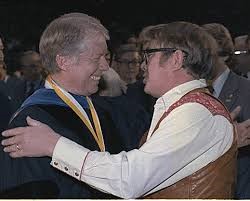
6. Probably no brother caused a president more embarrassment than Billy Carter, who was nearly the complete opposite of his brother, Jimmy. Billy was a beer drinker of Olympian status who was always available to the press for a regrettable comment, or shameful behavior, like public urination at the Atlanta airport. His fame for beer consumption led a brewer to create Billy Beer. The brewer soon went bankrupt. To raise money, Billy opened his own diplomatic relations with Libya, hosting Libyan officials while they visited the U.S. Two years later, the Justice Department discovered the Billy was a paid lobbyist for the Muammar Gadaffi’s government and had accepted nearly a quarter million dollars for his services.
7. Roger Clinton Jr. is Bill Clinton’s half-brother but a complete embarrassment. When Bill was Arkansas’ governor in the 1980s, Roger served a year in prison for dealing cocaine. When Bill was president, Roger spent much of his time vainly striving to become a rock singer or movie star. (You may not remember him from such films as Pumpkinhead II: Blood Wings, Spy Hard, and Bio-Dome.) As Bill neared the end of his presidency, Roger was also under FBI investigation for allegedly accepting money to get brother Bill to pardon six drug felons. Fortunately, Bill pardoned Roger’s drug conviction before he left office. Unfortunately, Roger was arrested for DUI one month later.
8. And then, there’s Neil Bush, son of one president, brother to another. He was accused of insider trading and selling his influence with presidential relatives. While brother George was president, he received $2 million in stock and $10,000 every time he attended a board meeting at Grace Semiconductor. Since Neil admitted he knew nothing about semiconductors, it was believed that Grace had hired him to influence his presidential relatives.But he is perhaps best remembered for his connection to Silverado Savings and Loan. After it collapsed in the late 1980s, Silverado was taken over by the government, which arranged a $1 billion bailout. Neil was eventually charged by the FDIC with negligence and conflict of interest and required to pay a $50,000 fine. He was also banned from the banking industry.
Featured image: Alice Roosevelt Longworth, daughter of Theodore Roosevelt, launching the USS Theodore Roosevelt on October 3, 1959. (U.S. Navy)
9 Sex Symbols Before Marilyn Monroe
Many will scroll past images of Marilyn Monroe on their social media feeds today, on what would have been her 91st birthday, remembering her as the glamourous bombshell of a bygone era. Although Monroe redefined what it meant to be an American sex symbol, she didn’t originate the role. That office was occupied by several women before her, reaching all the way back to the 1860s. Each of these women represented the changing ideals of beauty, charm, mystery, sex appeal, and skimpy outfits, often seasoned with a dash of scandal.
1. Adah Isaacs Menken knew how to get publicity in the 1860s. She wore her hair and her skirts far shorter than was acceptable. She held press conferences in her suite, sipping champagne and smoking cigarettes. But nothing drew attention like her portrayal of a Tartar warrior in the play Mazeppa. At the end of the play, Menken was stripped of her costume, under which she wore flesh-colored tights. The apparently nude actress was then tied to the back of a horse and sent off into the wilderness. New Yorkers were shocked by her performance, but not enough to hurt ticket sales.
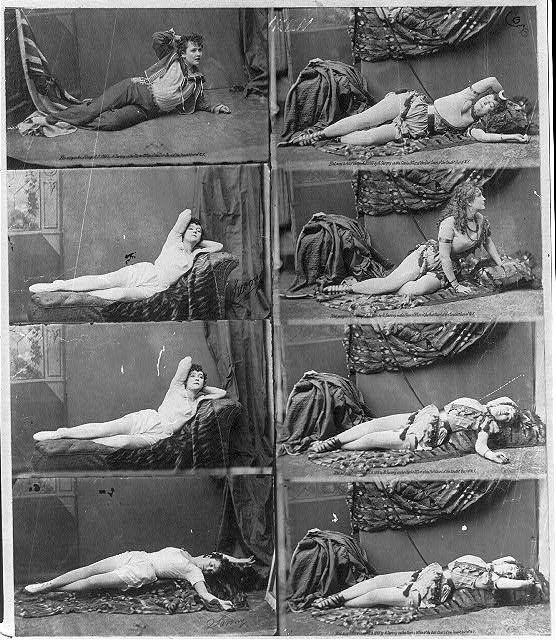
2. Lilly Langtry started her career as a famous beauty by becoming a popular artist’s model in England in the 1870s. She had an athletic figure, the result of daily exercise, and face that artists believed was a model of classical beauty. She drew the attention of the Prince of Wales and the two had a scandalous affair, which was an open secret. After breaking up with the Prince, Ms. Langtry sailed to America where she charmed New Yorkers with her poise, manners, and diction, while shocking them with her love affairs.
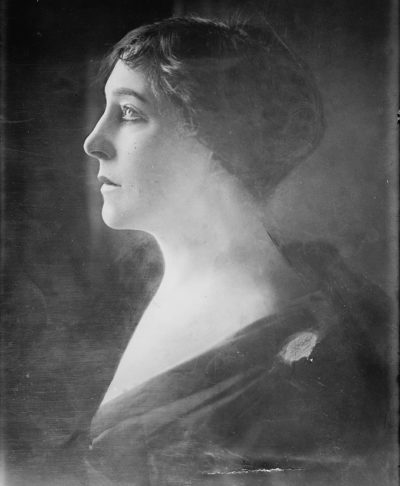
3. Lillian Russell was a popular singer and actress in the 1880s, famed for her performances in operettas. She came to embody the opulence of turn-of-the-century America. She enjoyed a lavish lifestyle, complete with a gold-plated, diamond-inlaid bicycle custom-made by Tiffany’s. She was admired for her full, statuesque figure, which was widely regarded as the ideal of feminine beauty.
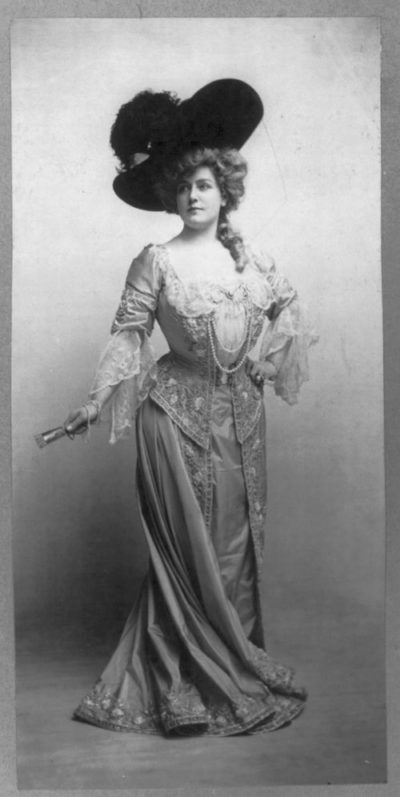
4. Beauty and scandal combined to give Evelyn Nesbit an undeserved reputation as a femme fatale. She was a model for several artists, including Charles Dana Gibson, inspiring him to create his series of “Gibson Girl” illustrations in the 1890s. In 1906, Nesbit’s wealthy but unbalanced husband, Harry Thaw, shot New York architect Stanford White. During Thaw’s trial, the country learned the reason for the shooting: White had befriended the 14-year-old Nesbit, then drugged and assaulted her at age 16. After Thaw was committed to an asylum, Nesbit tried to support herself in vaudeville and early motion pictures, but she never lost the stigma of a “fatal beauty.”
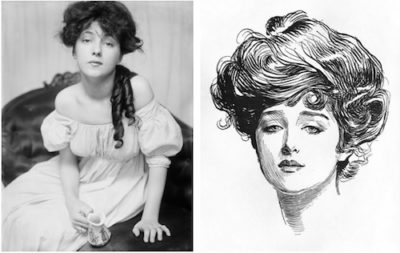
5. In the 1900s, a new manner of beauty came into fashion. Instead of the refined style of the Gibson girl or the voluptuous, full-figured ideal of a Lillian Russell, the popular star of the day was petite, wasp-waisted Anna Held. Her popularity was fueled by a continual flood of promotion by her husband, producer Florenz Ziegfeld. Newspapers and their readers were barraged with photos of Held and articles about her beauty, her jewelry, her fans, and her legendary milk baths.
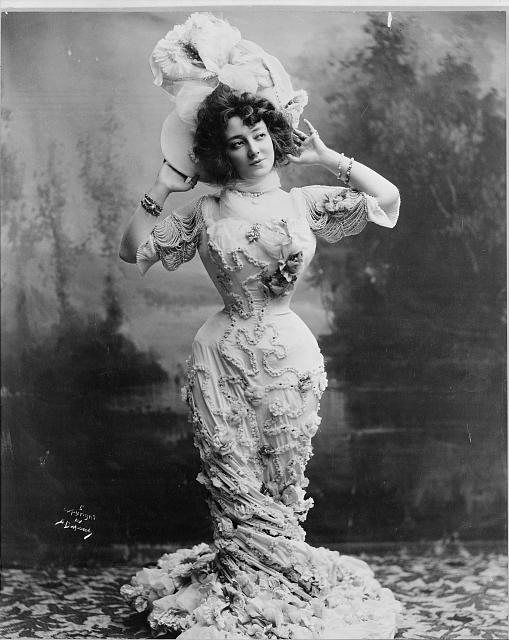
6. The most popular star of vaudeville in 1910, Eva Tanguay, had an uninhibited, carefree manner. Her singing and dancing conveyed an earthy sensuality. She presented herself as a wild, independent woman, singing songs like “It’s All Been Done Before but Not the Way I Do It”, “I Want Someone to Go Wild with Me”, and “Go As Far As You Like.” Her small, lithe figure and unpretentious style appealed to people who were tiring of the Victorian standards of beauty.
7. Theda Bara was the biggest star of the movies’ silent era, earning the equivalent of $56,000 a week. On film, she usually played a “vamp,” short for “vampire”—a beautiful woman who seduced and destroyed men. Bara performed some variation of this role in nearly 40 movies. Watching her movies today, it’s hard to see what Americans found seductive about her. Bara’s acting is as overdone as the eye makeup she wore. Fortunately, she was helped by some of the most daring costumes seen up to that time.
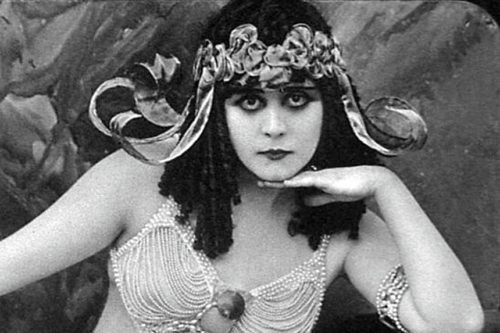
8. Clara Bow was known as the “It” girl partly because she had starred in a movie of that name, but mostly because she exuded “it” — that combination of charm, humor, and sex appeal. In her silent films of the 1920s, she helped popularize the new, jazz-age woman. A movie director described her as “the personification of the ideal aristocratic flapper: mischievous, pretty, aggressive, quick-tempered and deeply sentimental.”
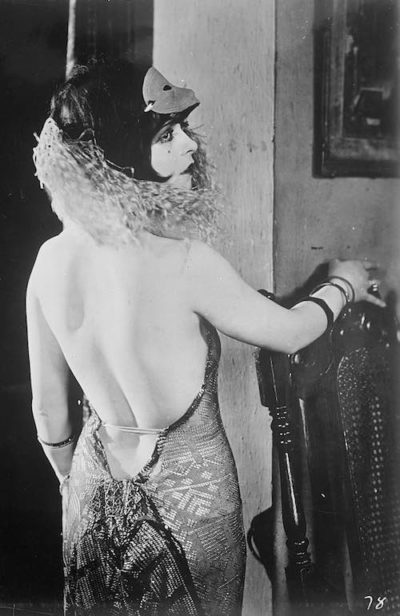
9. Mae West began singing and dancing on Broadway in the 1910s. She got her first starring role in a play she wrote and directed. It was entitled simply Sex, and before it was shut down by the city authorities, it had raised West to icon status. Several other plays followed, all on adult themes. In Diamond Lil, she drew heavy criticism, and crowds, playing a sexy and smart woman. She continued to play women with pronounced libidos, comporting herself with a mixture of satire and comedy.
Mae West and some of her famous one-liners.
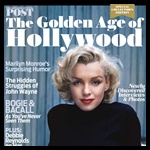 Interested in glamour and movies? Relive The Golden Age of Hollywood with this new collection of behind-the-scenes interviews — straight from the pages of The Saturday Evening Post — with the celebrities who defined “glamour” for a generation. Order The Golden Age of Hollywood today.
Interested in glamour and movies? Relive The Golden Age of Hollywood with this new collection of behind-the-scenes interviews — straight from the pages of The Saturday Evening Post — with the celebrities who defined “glamour” for a generation. Order The Golden Age of Hollywood today.
Happy Birthday, Count Dracula!
Count Dracula lives — at least his legend does. Since his first appearance in Bram Stoker’s novel, Dracula, in 1897, he has continually scared generations of readers and moviegoers for 120 years.
Dracula is the most successful of a long line of vampires. His literary forebears stretch back to the vampires that appeared in stories and poems of the early 1700s. But it is Count Dracula who has become the quintessential vampire in the popular imagination.
Stoker was inspired to write his novel by an 1885 essay about the superstitions of Transylvania. It described how, according to legend, the vampires of central Romania lived, bred, and were killed.
Stoker also drew on the stories of Vlad Dracula, a ruthless prince of the Wallachia region, which later became part of Romania. The famed 15th century warrior-prince earned the unpleasant title “Vlad the Impaler.”

The personality of Count Dracula, however, was based on the famed actor Henry Irving. Stoker was Irving’s personal assistant, and he lived in awe and dread of the Victorian-era superstar. In Stoker’s book, he gives the count the austere, haughty, manipulative manner that Stoker endured in his work with Irving.
Dracula was adapted for film in 1931. The count was portrayed by Hungarian-born Bela Lugosi, who gave him a convincingly foreign and appropriately creepy character. Lugosi had successfully played the count on Broadway, but his movie performance was enhanced by atmospheric scenery, dramatic lighting, and close-ups of Lugosi’s expressions. The actor’s heavy Hungarian accent became so closely associated with the character that it is still instantly recognizable, even in a bad imitation.
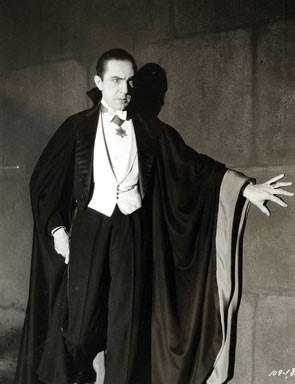
Stoker never enjoyed financial success from Dracula. But the critics praised it, as did the Saturday Evening Post’s reviewer in 1900, the year after Dracula’s American publication.
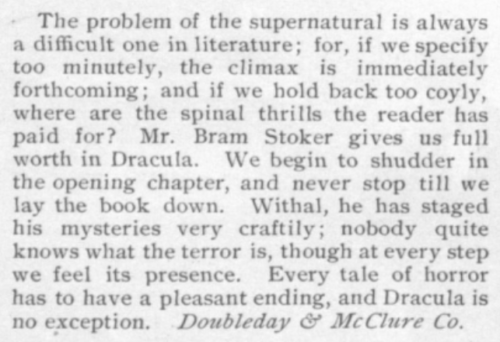
In Stoker’s book, the count hailed from Transylvania, a region in central Romania. The book and movie have made it undoubtedly the most famous of all Romanian regions but have forever linked it to the Dracula legend.
Dracula’s significance to the region was lost on Transylvanians during the communist era, from 1944 to 1989. In 1965, Post contributor Gene Smith traveled there to visit the setting of Bram Stoker’s book. As he learned, there was little room for such bourgeois fantasies. When Smith asked his tour guide what she knew about Count Dracula, she shocked him by asking, “Who is Dracula?” When he told her, she dismissed such a silly notion. “We have no counts in the Romanian People’s Republic.”
Today, Romania is a sovereign state in the European Union. Freed from communist restraint, the locals are ready to cash in on Dracula tourism. It’s nice to know the count is welcome in his hometown in time for his 120th birthday.
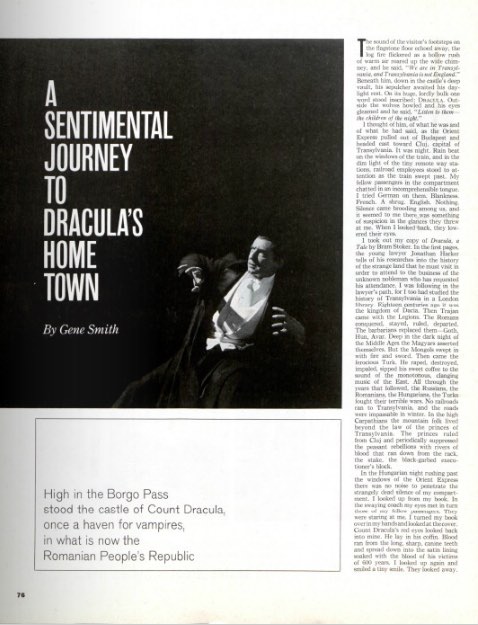
Featured image: Wikimedia Commons
7 Presidential Visits That Changed History
Foreign travel has become so integral to the job of the U.S. president that it’s hard to believe the first 25 presidents never left the country while in office.
The first president to do so was Theodore Roosevelt. In November 1906, Roosevelt traveled to Panama to bring attention to the massive construction project the U.S. had undertaken to build the canal. And he didn’t mind grabbing a little press attention for himself.
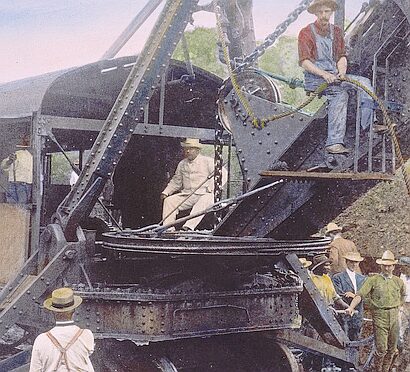
After Roosevelt, every president found a reason for at least one trip abroad. President Franklin Roosevelt made the most trips. His 21 visits to foreign countries, while impressive, were spread over his 12 years as president. In just eight years, President Eisenhower took 17 trips, including one to Korea to see for himself how the war was progressing.
Scores of presidential trips have been taken and forgotten. Here are seven that made a lasting impression on history.
1. Woodrow Wilson — Paris and other European Capitals
December 14–February 24, 1919 and March 14 –June 18, 1919
President Wilson spent half a year abroad, immersed in the politics of Europe. He arrived in Paris intent on building a lasting peace out of the Allied victory in the First World War and brought Fourteen Points he thought would establish lasting, peaceful relations between nations — an effort that led to his winning the 1919 Nobel Peace Prize. But he was outmatched in negotiation by the cynical policies of France and Britain. Contrary to Wilson’s wishes, they dropped crushing reparation fines on Germany, which led to the next world war. And when Wilson finally returned to the States to push for Congress to accept entry into the League of Nations, Congress voted him down, beginning a new period of American isolationism.
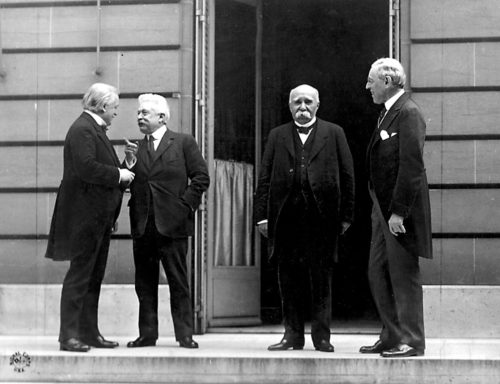
2. Franklin D. Roosevelt — Yalta
February 3–12, 1945
Roosevelt had been the principal coordinator of Allied efforts in previous wartime conferences, but he wasn’t the star in this one. Soviet premier Joseph Stalin managed to walk away with an agreement that would put all of Eastern Europe under Soviet influence. Roosevelt and Winston Churchill expected Joseph Stalin to hold free postwar elections in the countries in this region as a prelude to Russian withdrawal, but Stalin had no intention of leaving. He also managed to enter the war with Japan in exchange for control over several areas within China. From these areas, he was able to ship arms to the communist army in China, helping ensure that they wrested leadership of the country from the Chinese Nationalists.
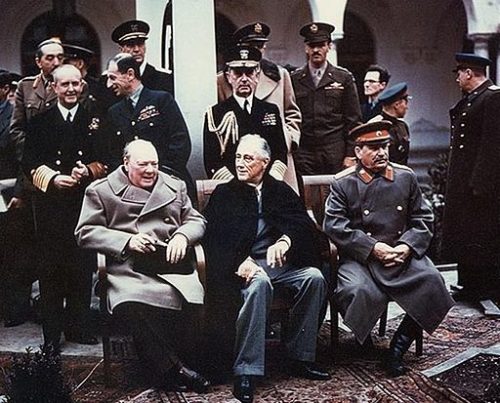
3. Harry Truman — Potsdam
July 16–August 2, 1945
Stepping into the role of America’s negotiator when President Roosevelt suddenly died, Truman worked with Churchill and Stalin to decide the fate of postwar Germany. The country would be divided into four zones of Allied occupation (France was the fourth occupying power). The three leaders also agreed to return refugees to their countries of origin and defined the terms the Allies would demand of Japan before accepting its surrender.
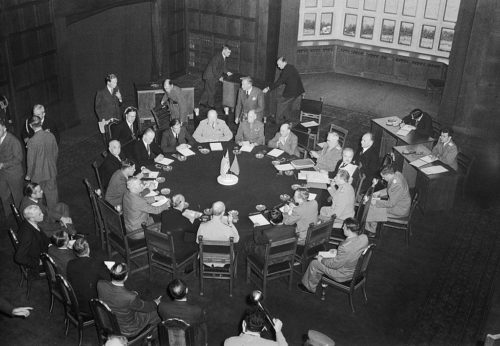
4. John F. Kennedy —Berlin
June 26, 1963
At war’s end, Berlin was divided into four zones, each controlled by a different ally. It soon became obvious that the Russians in East Berlin were only waiting for the other allies to leave before seizing the rest of the city. The fact that West Berlin was a democratic island deep in Russian-occupied East Germany left West Berliners apprehensive of being abandoned. Americans had shown their support of West Berlin by flying in tons of vital supplies when Russia blockaded the city. Yet Berliners wondered how strong America’s commitment to the city was. Then President Kennedy arrived to reassure them of continuing U.S. support, uttering the memorable lines, “All free men, wherever they may live, are citizens of Berlin, and therefore, as a free man, I take pride in the words ‘Ich bin ein Berliner!’”
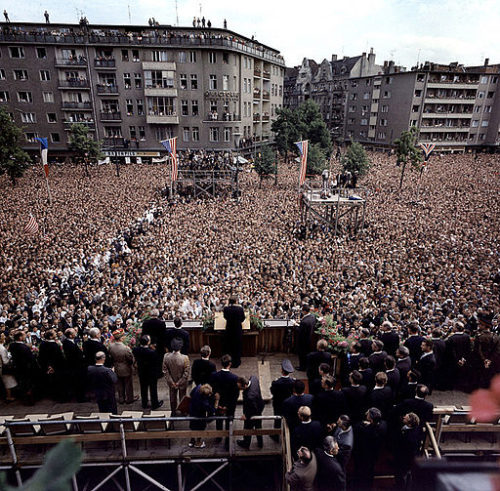
5. Richard Nixon — China
February 21–28, 1972
Relations between communist Russia and communist China had been chummy after World War II, but in the following years, the Chinese began resenting Russia’s proprietary attitude toward them. President Nixon saw this as an opportunity. He believed widening the gap between the countries would encourage Russia to put more effort in pursuing détente with the West. Meanwhile, China saw a Sino-American connection as a way to get back at Russia.
Nixon and Chinese officials worked out a bilateral agreement that would lead to America diplomatically recognizing communist China and cutting ties to its ally, Taiwan.
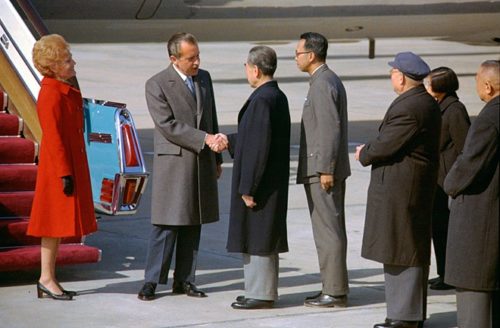
6. Jimmy Carter — Iran
December 31, 1977–January 1, 1978
President Carter visited the Shah and publicly complimented him for creating a stable nation within the turbulent Middle East. Iranian citizens knew better; the Shah remained in power only by the work of a security force that brutally put down all opposition. Iranians felt betrayed by Carter, who had spoked so highly of supporting human rights. When the Shah was deposed the following year, they remembered Carter’s words — and America’s refusal to hand over the Shah — as they stormed the U.S. embassy and took the staff hostage. America’s long support of the Shah is still recalled with bitterness in Iran.
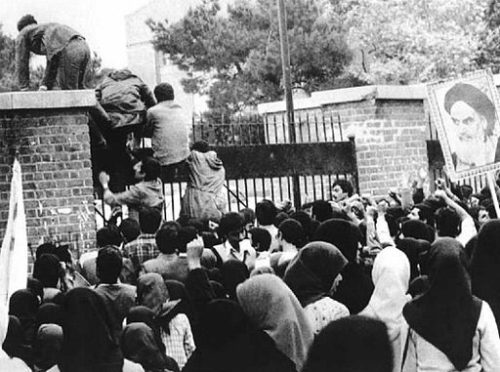
7. Ronald Reagan — Geneva, Switzerland
November 19–21, 1985
President Reagan had risen in politics on his reputation for bitterly opposing communism and the Soviet regime. But in 1985, at his insistence, he met with General Secretary of the Communist Party of the Soviet Union, Mikhail Gorbachev. The first meeting was contentious, and both leaders exchanged accusations over past differences. But the meeting led to four more that, in time, considerably eased East-West tensions and probably contributed to the collapse of the Soviet empire.
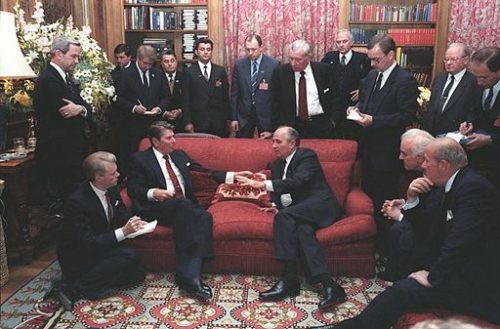
Celebrity Encounters: Wilt Chamberlain
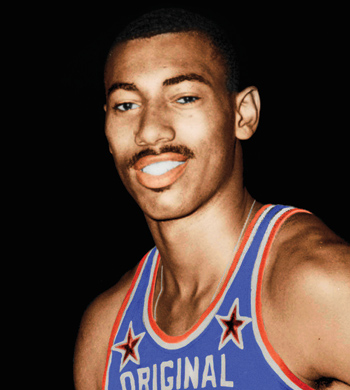
In 1962, I became chairman and general partner of the San Francisco Warriors, later to become the Golden State Warriors. The team was awful, but it did have 7’1″ “Wilt the Stilt” Chamberlain, the greatest player of all time as far as I’m concerned. Wilt and I became good friends. I owned harness horses in those days, and he loved to gamble, so he became my partner on several horses. Once, while at Roosevelt Raceway in New York to watch one of our horses race, he pulled out a huge stack of $100 bills, peeled off five or six, and handed them to a friend with betting instructions.
I pointed to the roll. “Hey,” I said, “put that away.”
“Why?” he asked.
“Someone’s liable to hit you over the head and grab that,”
I joked.
“Anyone who wants to hit me over the head is gonna need a ladder,” he snapped back. “If I see someone coming at me with a ladder, I’ll yell for help.”
–Matty Simmons
In our March/April 2016 issue, Simmons wrote “The Day Cash Died” about being one of the three men who invented the credit card and formed The Diners Club, the first credit card company.
This article is featured in the March/April 2017 issue of The Saturday Evening Post. Subscribe to the magazine for more art, inspiring stories, fiction, humor, and features from our archives.
